In this Tokyo Food Guide, you’ll find our recommendations on the 20 top best foods to eat in the city! From the best sushi to the latest food craze to iconic street foods, these are the unmissable foods you must try when visiting Tokyo.
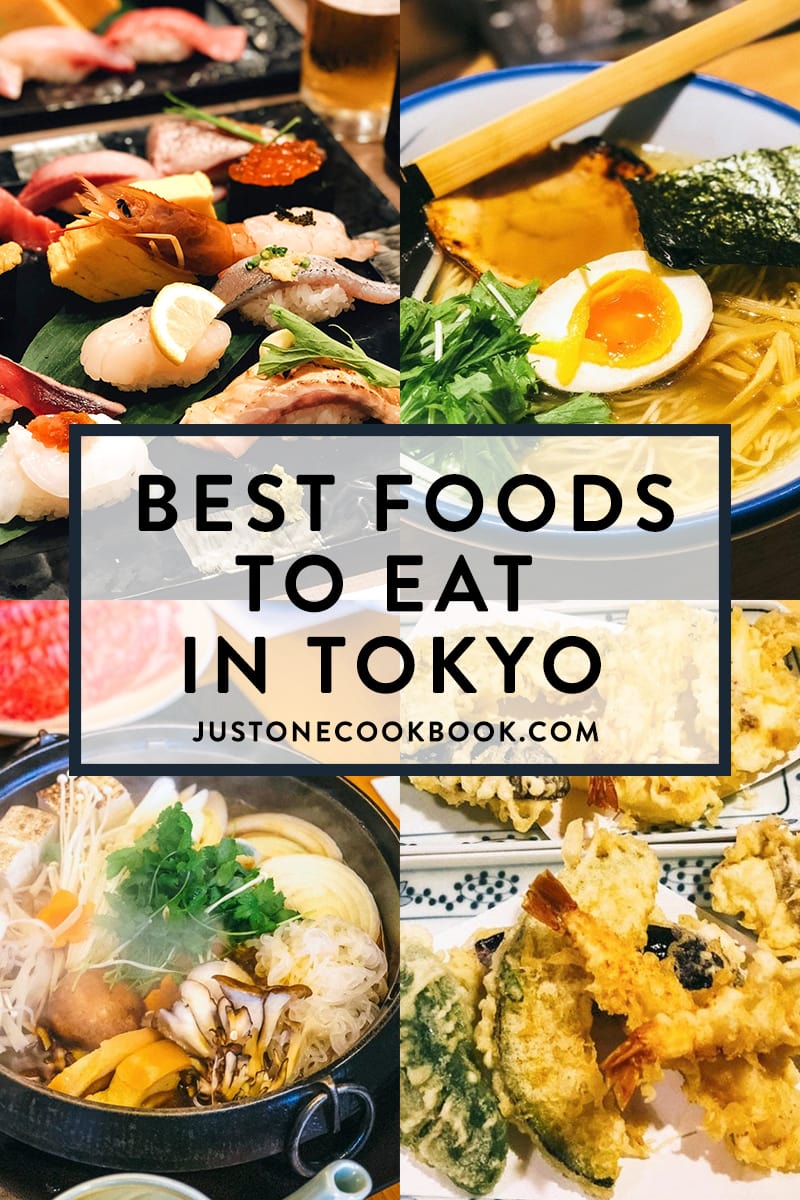
It is no exaggeration when we say that food alone is a strong reason to visit Tokyo. The decades-long devotion and perfectionism in the artistry have earned this food heaven of Japan more Michelin awards than any other place in the world besides France. Are you ready to experience an epic gastronomic adventure?
First, what should you eat? With so many incredible food choices and so little time, how do you make the most of your trip? Luckily, there is really no bad food in Tokyo. Whether it’s cheap eats or fancy dining, there is an option that meets every traveler’s budget.
Here, we’ve put together a list of the top best foods to eat in Tokyo. There are 20 of them, which we believe are truly special and iconic to Tokyo. You’ll also find our recommended restaurants and places for each food, so you know where to find them. This is by no means an exhaustive list—but enough to get you started. Yes, you want to go hungry!
1. Sushi
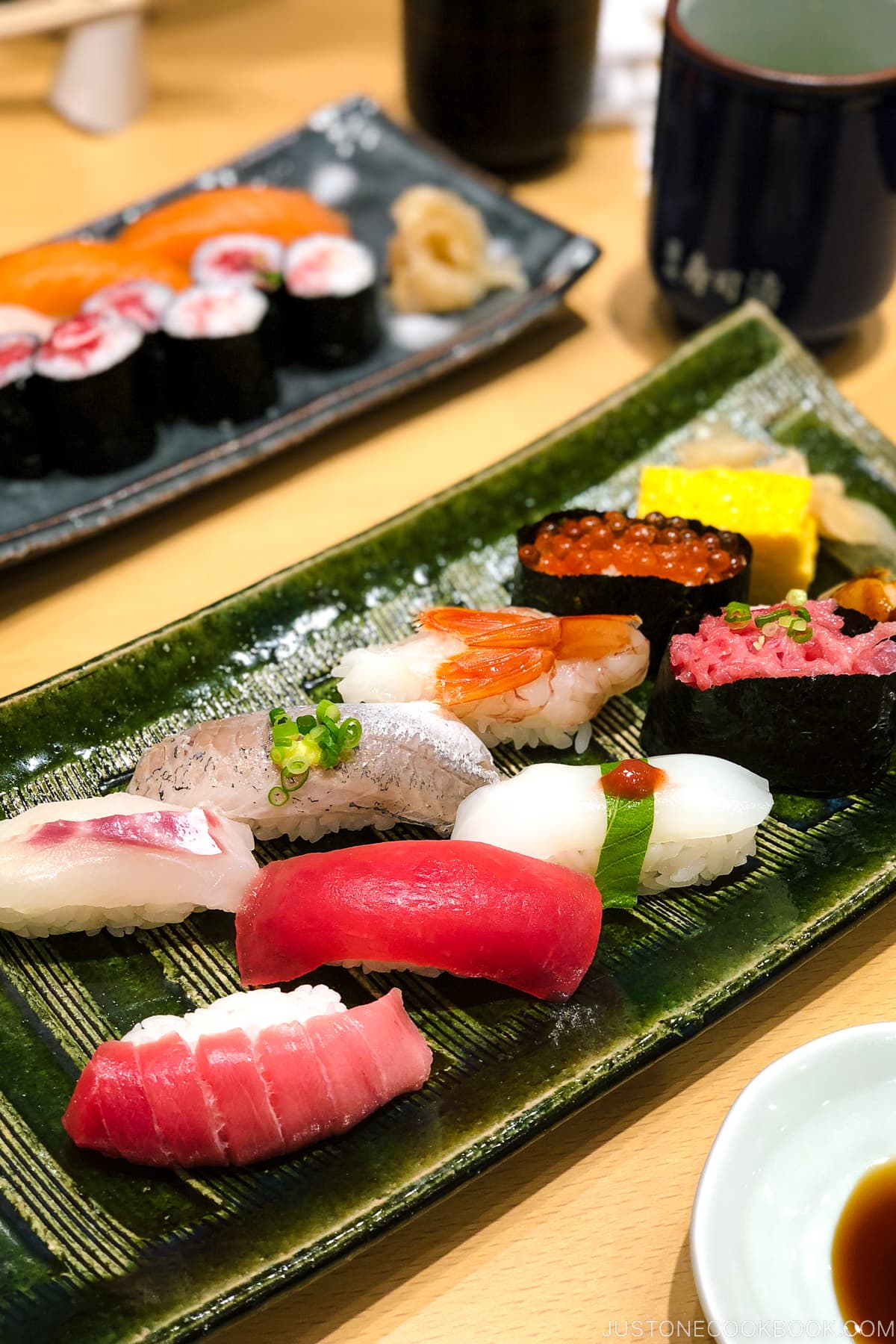
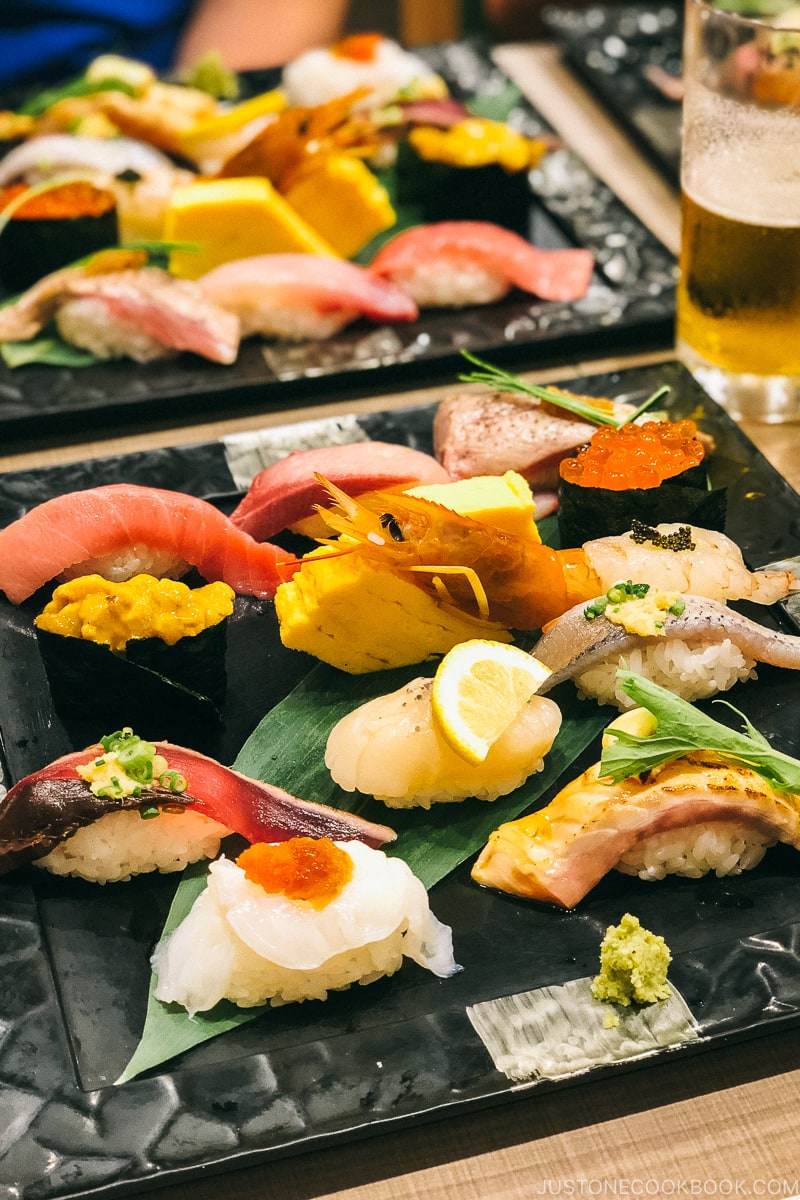
Tokyo, the world capital of sushi (寿司), is where you get next-level sushi that sets them apart from sushi in the rest of the world. Two major winning factors are the abundance of fresh seafood and the time-honored skills that go into making the vinegared sushi rice. After all, sushi is the food that is best synonymous with Japanese cuisine.
The very best news is good sushi is everywhere in Tokyo, and at every budget. Want to enjoy sushi on a tight budget? Head over to the cheap and casual kaiten zushi (conveyor belt sushi) restaurants where you can get a great selection of seafood without breaking the bank. It’s our favorite place to indulge as much sushi as possible! For a one-of-the-kind theatrical sushi experience, there are the reveled Michelin-starred establishments you can pay homage to (if your budget allows).
JOC recommendations in Tokyo:
- Matsuei (Ebisu, Roppongi)
- Kyubei (Ginza, Shinjuku, etc)
- Sushi no Midori (Ginza, Shibuya, etc)
Also, you won’t go wrong with any sushi joints nestled within the famous Toyosu and Tsukiji Fish Market. Go early and treat yourself to multiple sushi breakfasts. Sushi Dai and Daiwa Sushi are the best, but any shop with lines of locals will not disappoint.
2. Ramen
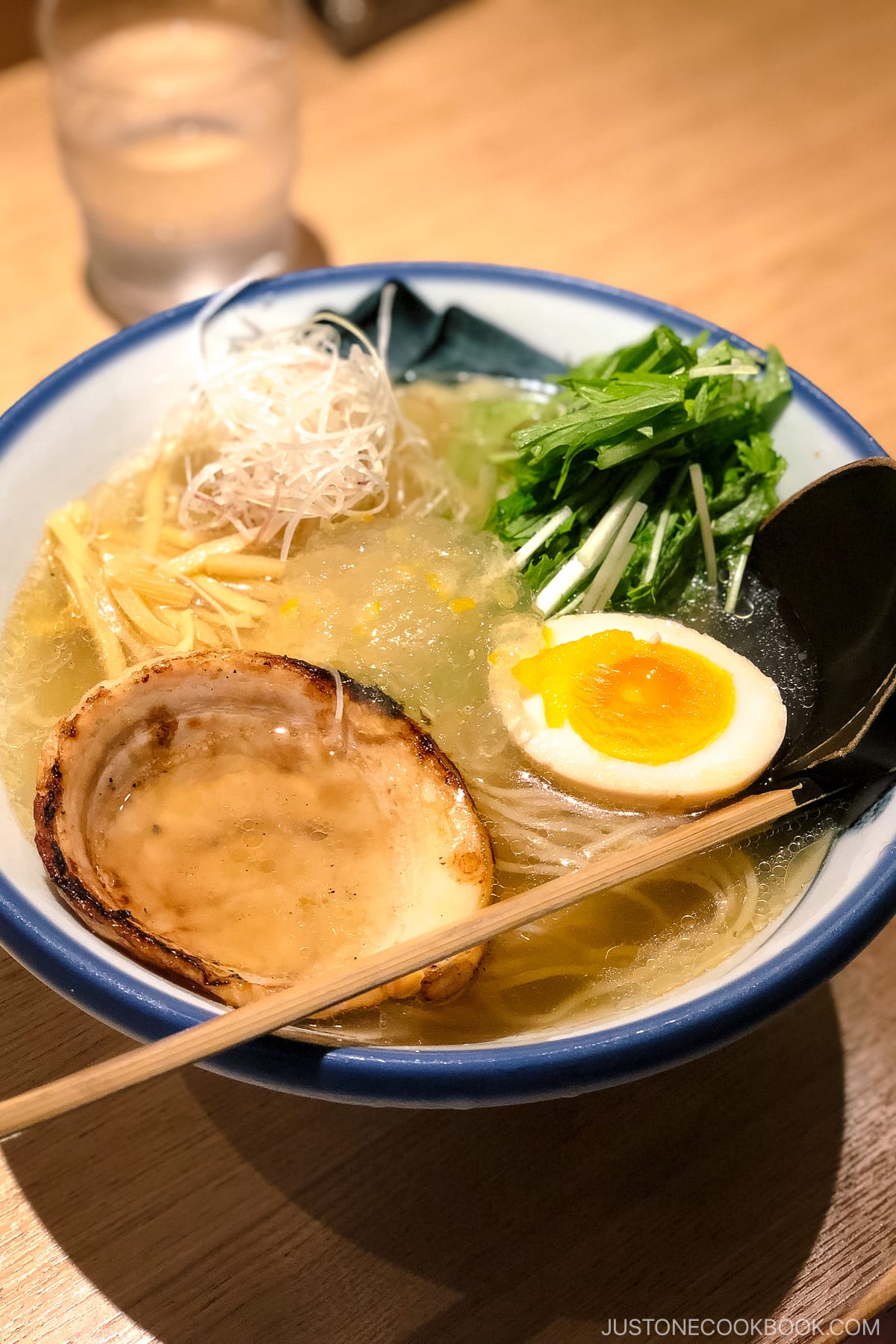
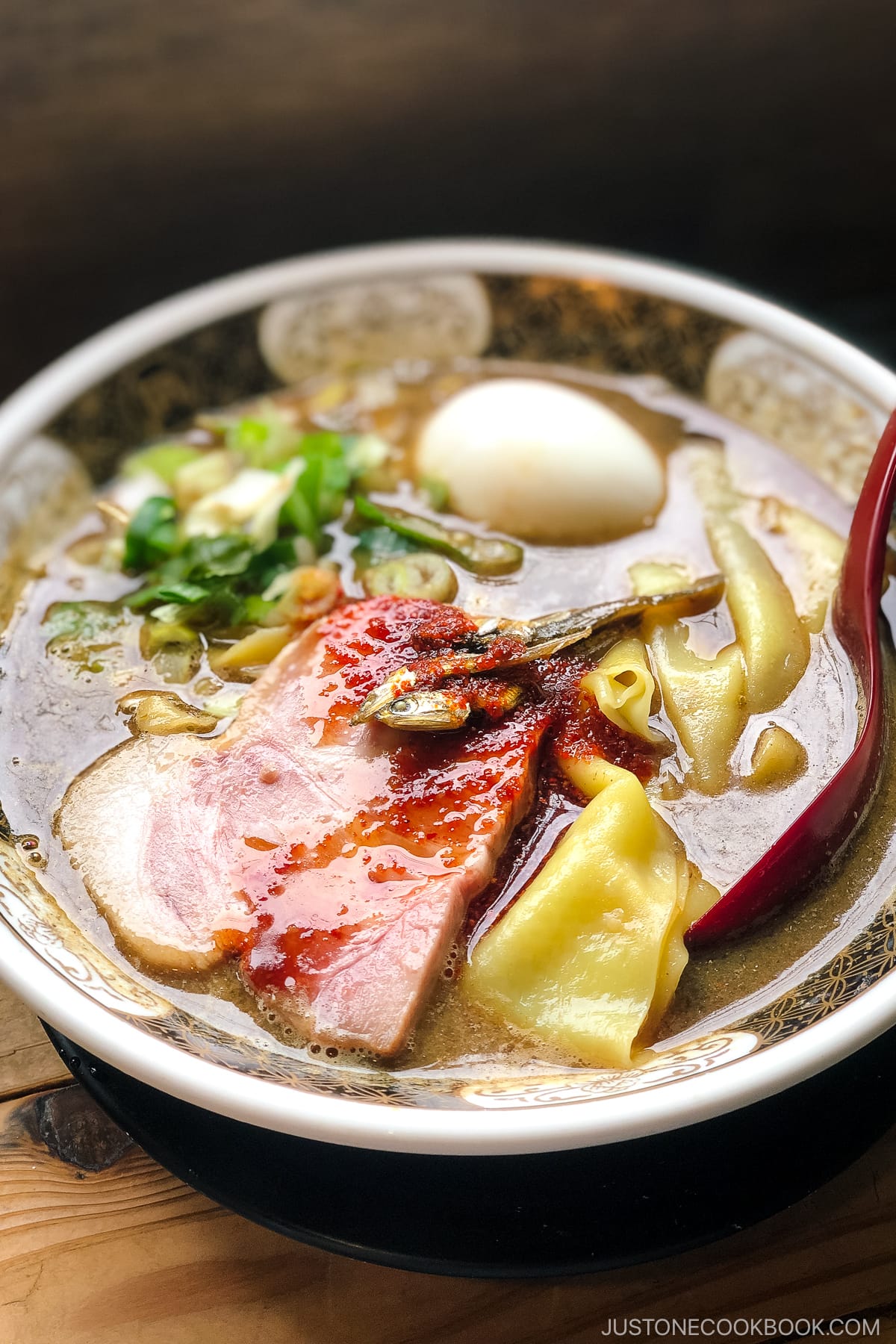
Perfectly chewy noodles, jammy ramen egg, juicy char siu pork, bamboo shoots, and nori sheets in a hot piping bowl of soup broth. Ramen (ラーメン) needs no introduction. Having taken the world by storm in recent years, this soul food of Japan dominates the food scene in Tokyo, and it’s just getting better and better.
You can find ramen shops hidden behind train stations and department buildings, tucked in inconspicuous streets, or sandwiched among rows of food stalls, serving bowls of ramen in great varieties. There is tonkotsu ramen, shio ramen, miso ramen, spicy shoyu ramen, tsukemen, and cold ramen. There’s also a new wave of young ramen masters with their creative and fusion endeavors. By all means, explore all the options you want because this is where to get your ramen fix. Slurp away!
JOC recommendations in Tokyo:
Shio Ramen
- Menya Kaijin (Shinjuku) – Try “Arataki Shio Ramen”
- Taishio Soba Touka (Akebonobashi) – Try “Taishio Soba”
- Afuri (Ebisu, Nakameguro, Harajuku, Roppongi, etc) – Try “Shio Ramen,” “Yuzu Shio Ramen,” and “Ooba Kaoru Ume Shio Ramen”
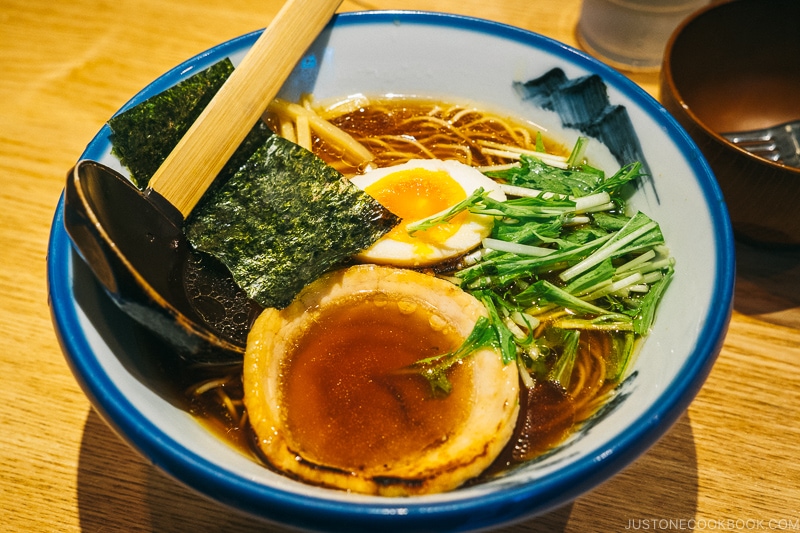
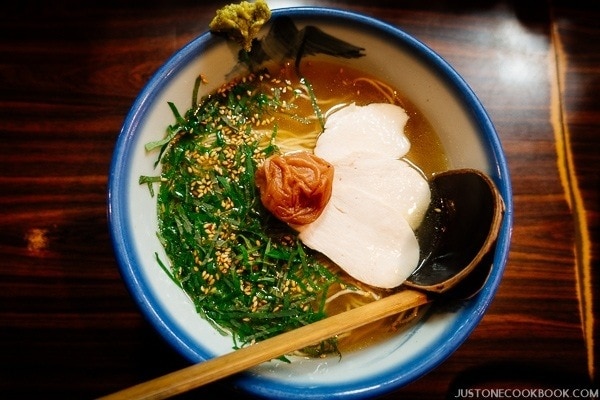
Shoyu Ramen
- Konjiki Hototogisu (Shijuku Gyoen) – Try “Soba (Shoyu)”
- Kiraku (Shibuya) – Try “Chukamen” and “Char Siu Wonton Men”
- Isshin (Meguro) – Try “Toku Shoyu Ramen”
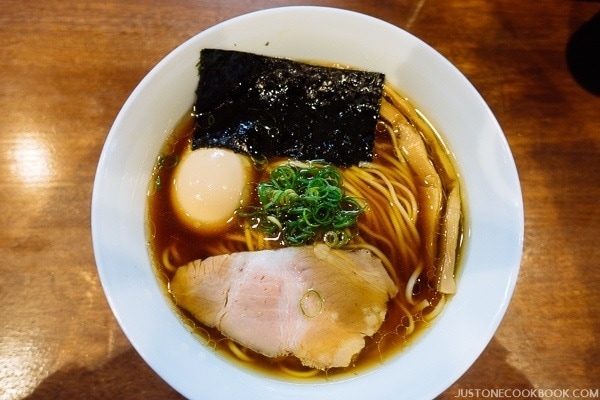
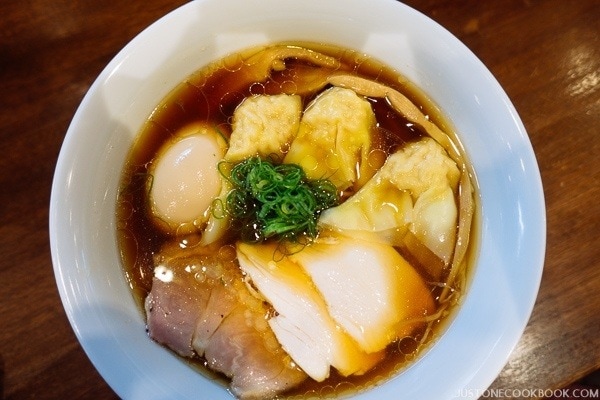
Miso Ramen
- Ichifuku (Shibuya) – Try “Miso Ramen”
- Ramen Dining Do Miso (Kyobashi, Marunouchi) – Try “Toku Miso Kotteri Ramen” and “Toku Shiro Miso Kotteri Ramen”
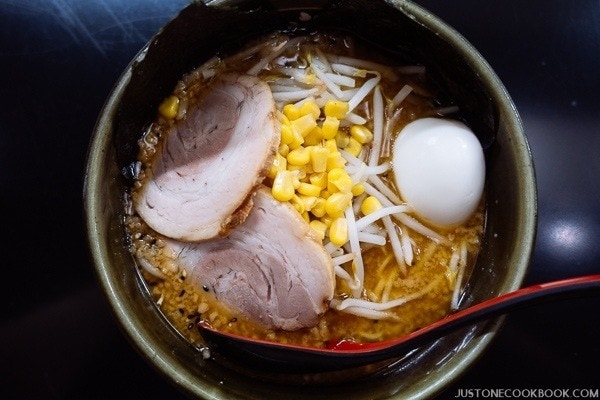
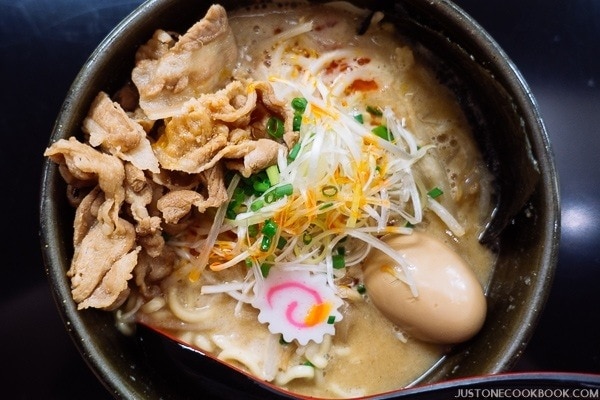
Others
- Kagari (Ginza)
- King Seimen (Ouji)
“Ramen Streets”
Instead of heading off to a particular ramen shop, why not eat your way through the different styles and varieties of ramen steps away from each other? These “ramen streets” feature popular ramen shop outposts. It’s an easy way to slurp multiple bowls without running around town.
- Tokyo Ramen Street – Conveniently located outside the ticket gate of Tokyo station, the biggest train hub in Tokyo, Tokyo Ramen Street hosts seven ramen shops from around the country and a popup shop that changes every 101 days. It’s a worthy detour even if you’re not traveling through the station!
- KITTE Ramen Battle Zone at KITTE GRANCHE – Another ramen street in a building across from Tokyo station is the KITTE Ramen Battle Zone, featuring five ramen shops. It gets crowded during office workers’ lunch and dinner hours, so avoid peak hours. There’s an outpost of Tomita Ramen of the documentary Ramen Head fame.
- Shin-Yokohama Ramen Museum – A ramen-themed amusement park, eat, learn, and make ramen at Shin-Yokohama Ramen Museum. It also offers ramen-making lessons (advanced reservation necessary, see website for details) if you’re curious to learn more. The ramen shops also offer half-size portions, so you can easily work your way through the lineup.
3. Tempura
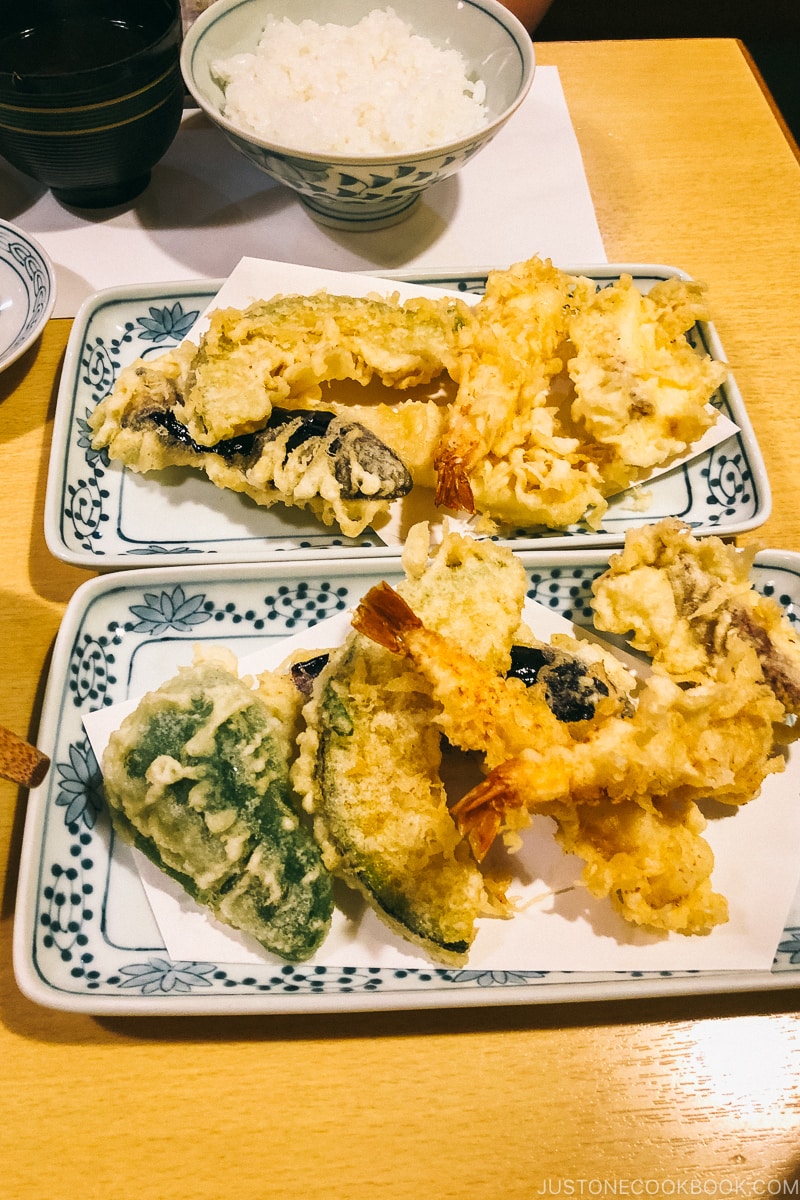
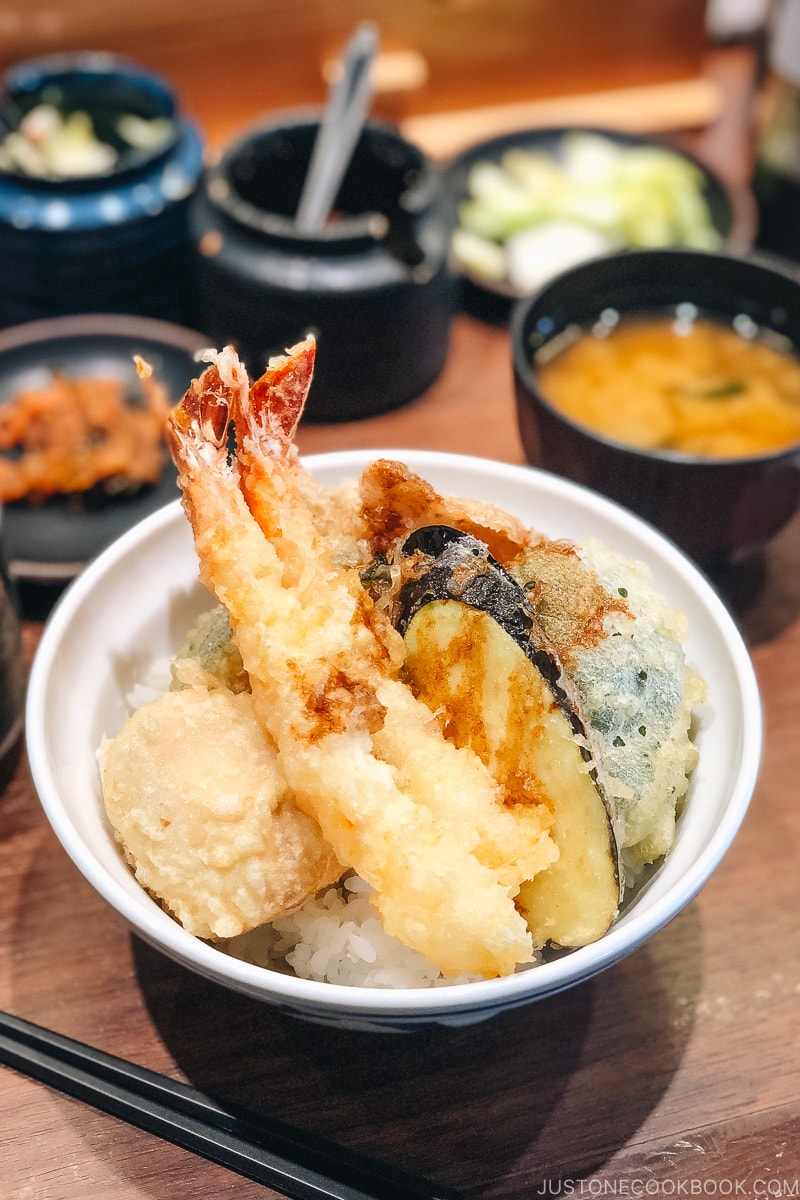
We may be biased, but dare we say no other world cuisine does deep-fried food as excellent as the Japanese! Tempura (天ぷら) is the obvious evidence of the claim. What is not to love about deep-fried shrimp or sweet potato encrusted in the lightest, crispiest batter? And only in Japan you can find specialized restaurants that serve the best of the best tempura.
JOC recommendations in Tokyo:
- Tempura Abe (Ginza)
- Tsunahachi (Shinjuku, Ginza, Tokyo, etc)
- Tempura Kondo (Ginza)
4. Yakitori
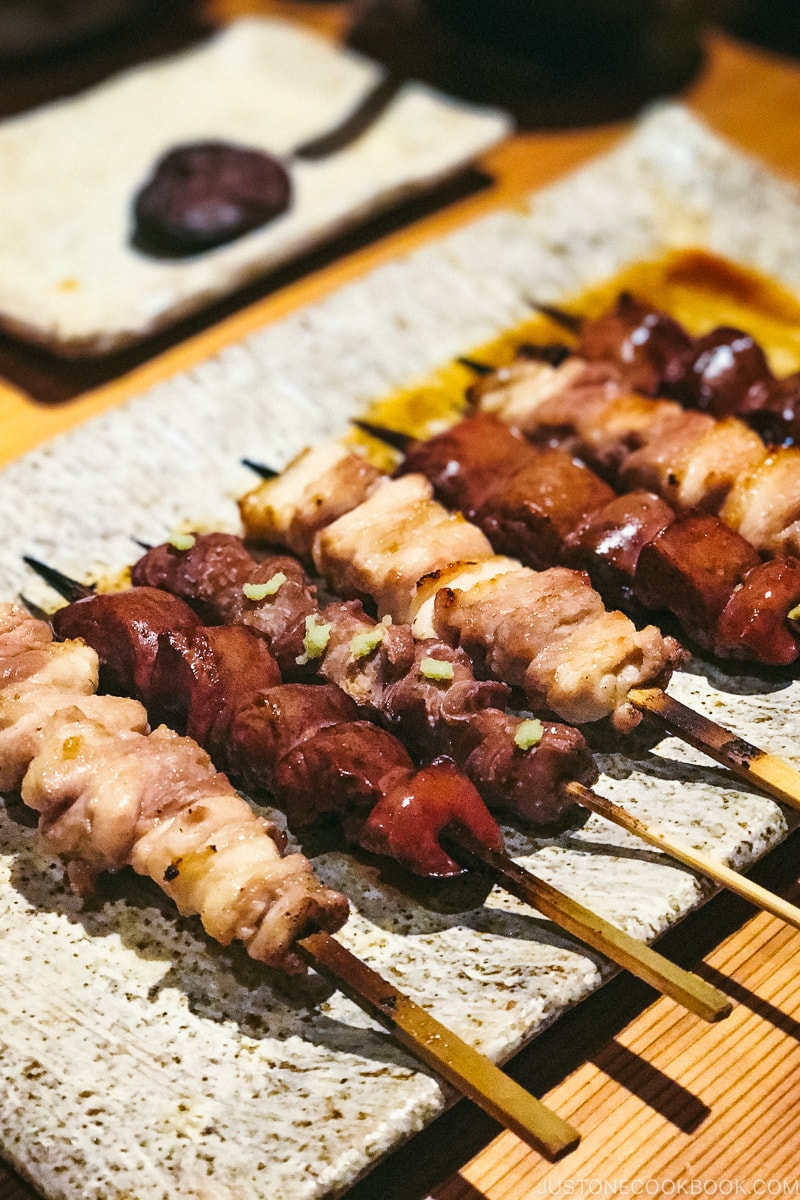
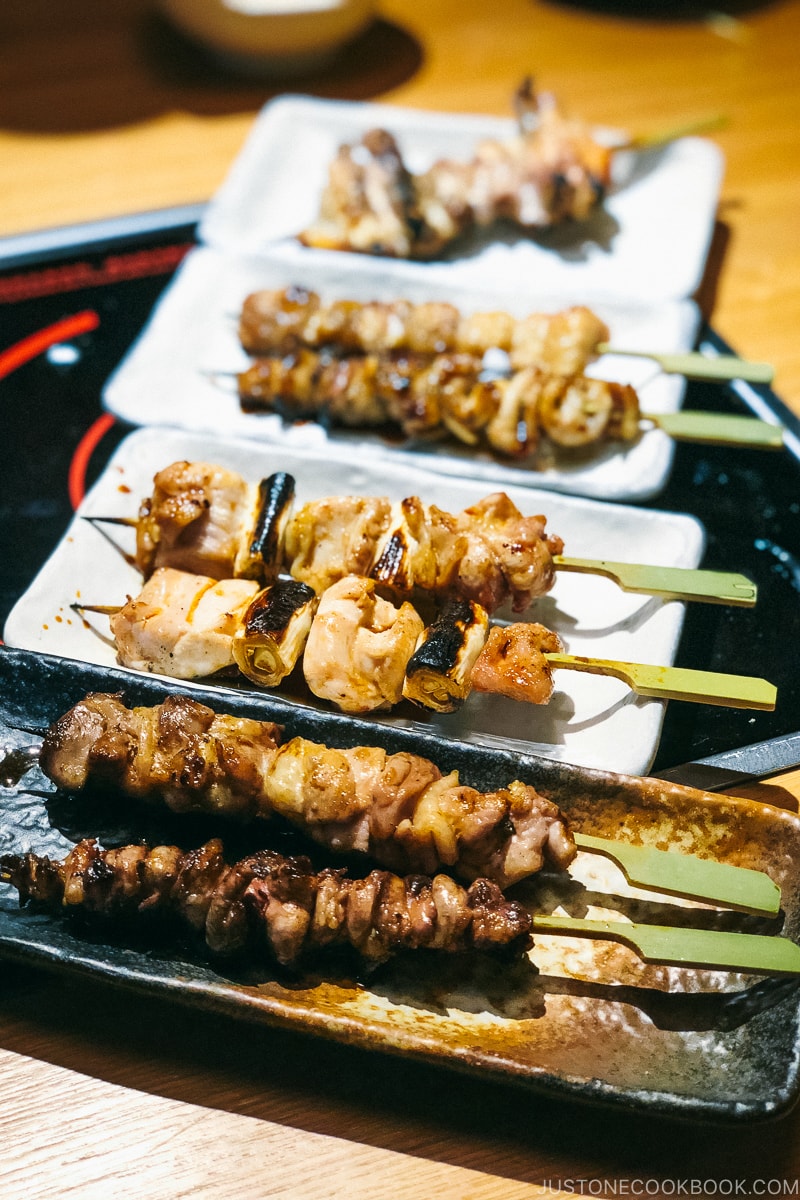
Yakitori (焼き鳥) are tasty skewered chicken meat brushed with a sweet soy glaze and grilled over charcoal. While chicken meat is the most common, you can also find other meats and vegetables on skewers on the Yakitori menus. It is also where you’ll learn the advanced level of Japanese chicken butchery, where opal, liver, gizzards, and skins make regular appearances.
Tokyo’s best places to enjoy yakitori are izakaya restaurants (Japanese gastropubs) and specialty yakitori restaurants.
JOC recommendations in Tokyo:
- Torikizoku (Shinjuku, Shibuya, Tokyo, etc)
- Torishiki (Shinagawa)
- Kushiwakamaru (Nakameguro)
5. Japanese Curry
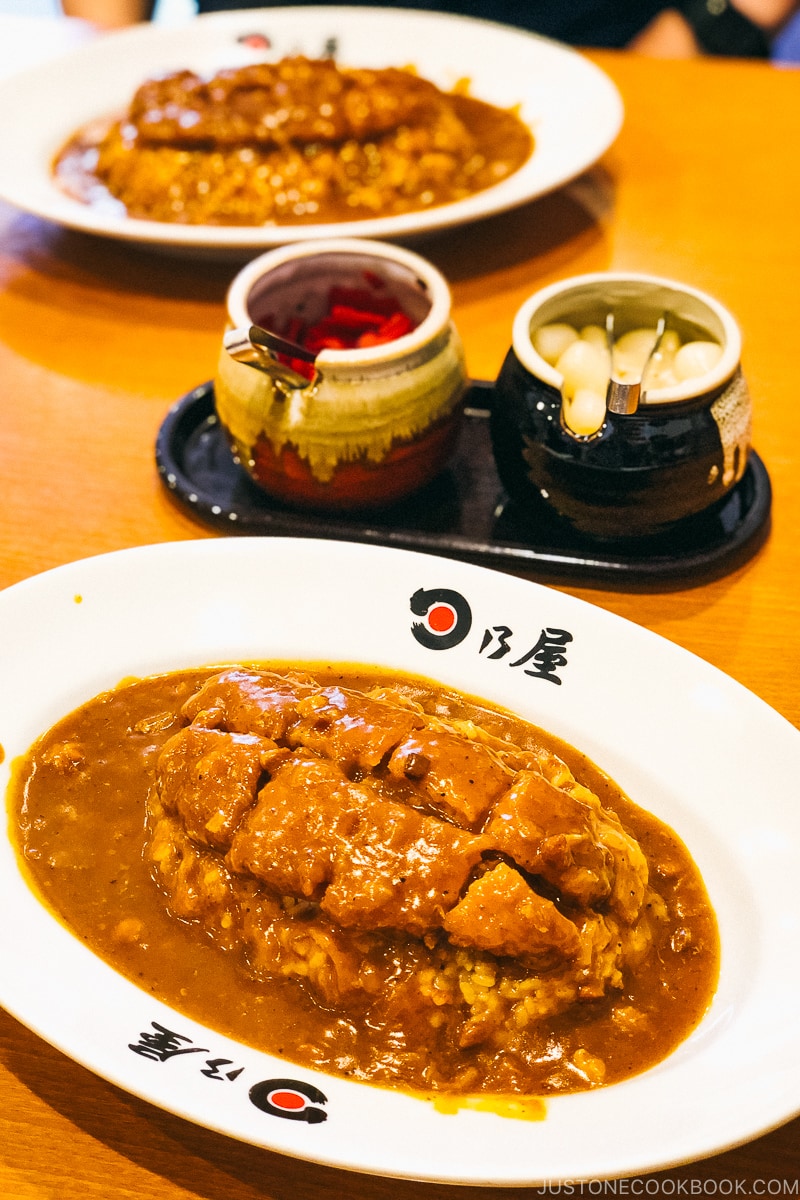
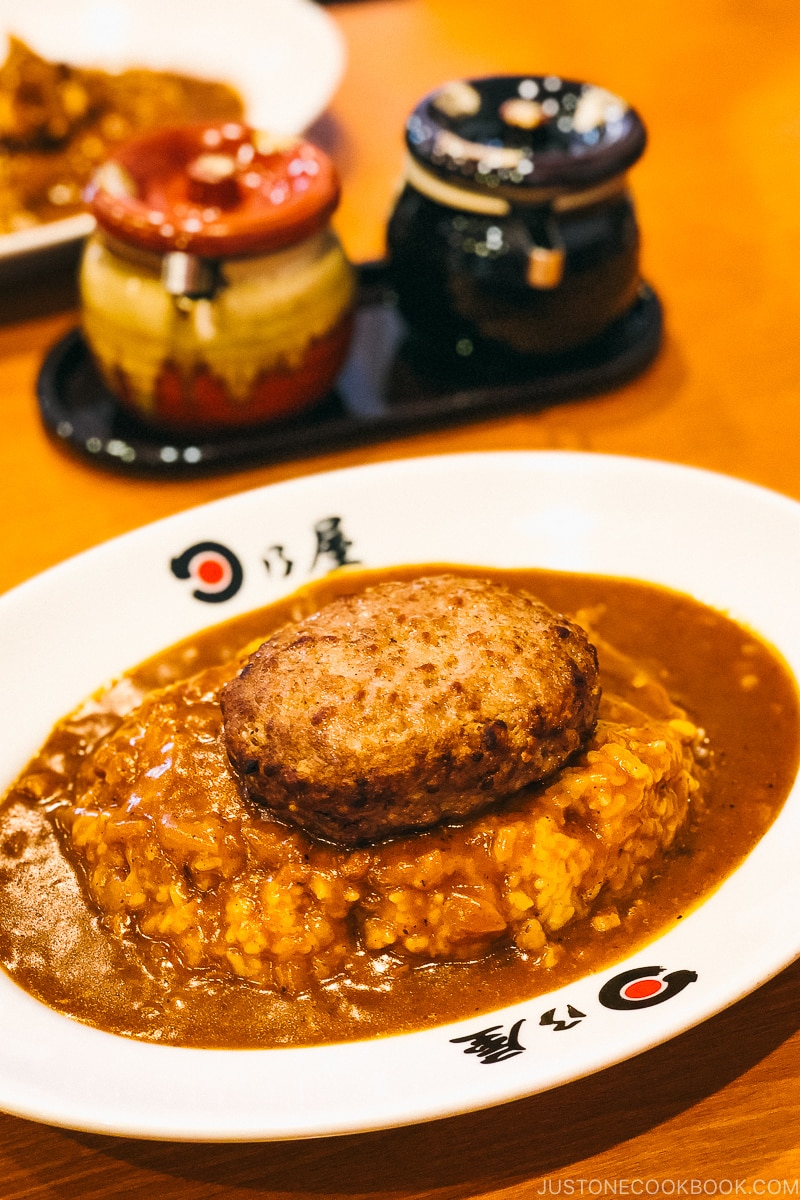
Brought to Japan in the late 1800 by the British, Japanese curry (カレー) is considered one of the nation’s most popular convenience and comfort foods. Unlike Thai or Indian-style curries, the Japanese version has a more stew-like texture and is generally sweeter and milder in heat. They make a perfect introduction to people trying curry for the first time. Which means they are kid-friendly too. Some of the must-try curry dishes: curry rice, curry udon, and katsu kare (curry with breaded pork cutlet).
JOC recommendations in Tokyo:
- Hiroo no Curry (Hiroo)
- Hinoya Curry (Shinjuku, Ikebukuro, Shibuya, etc)
6. Soba
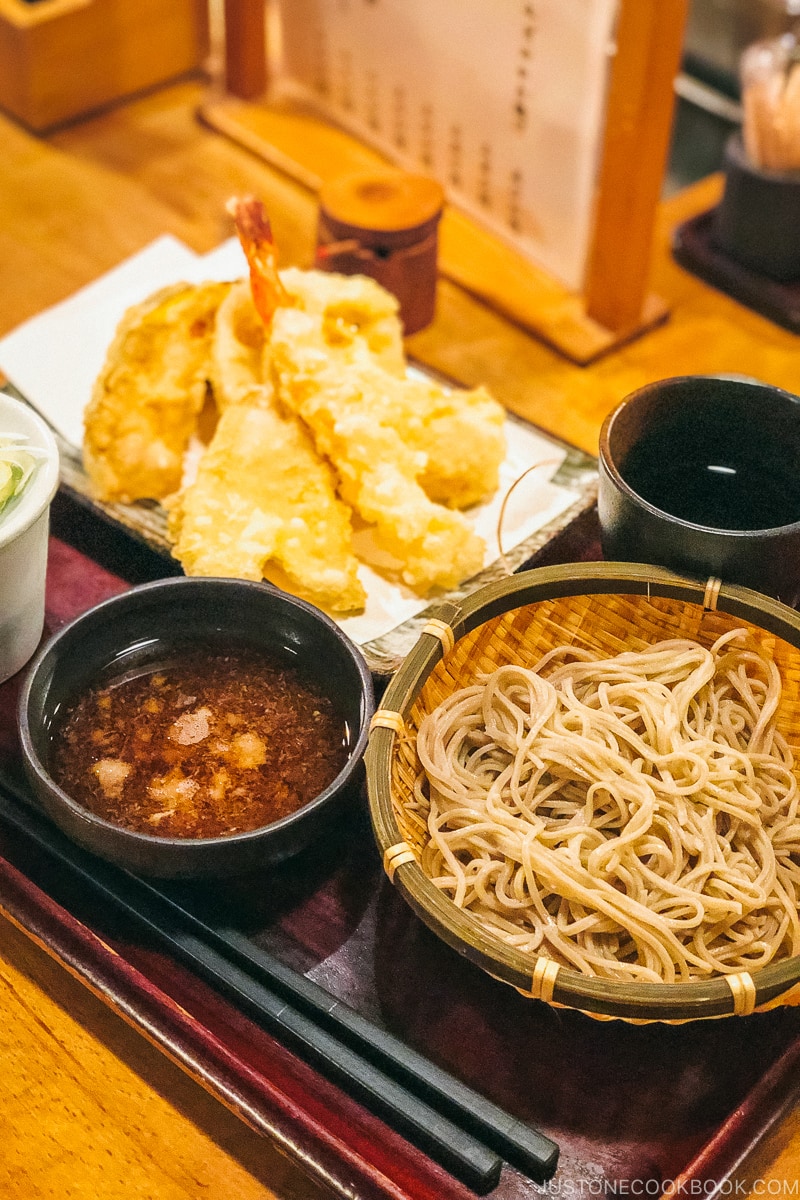
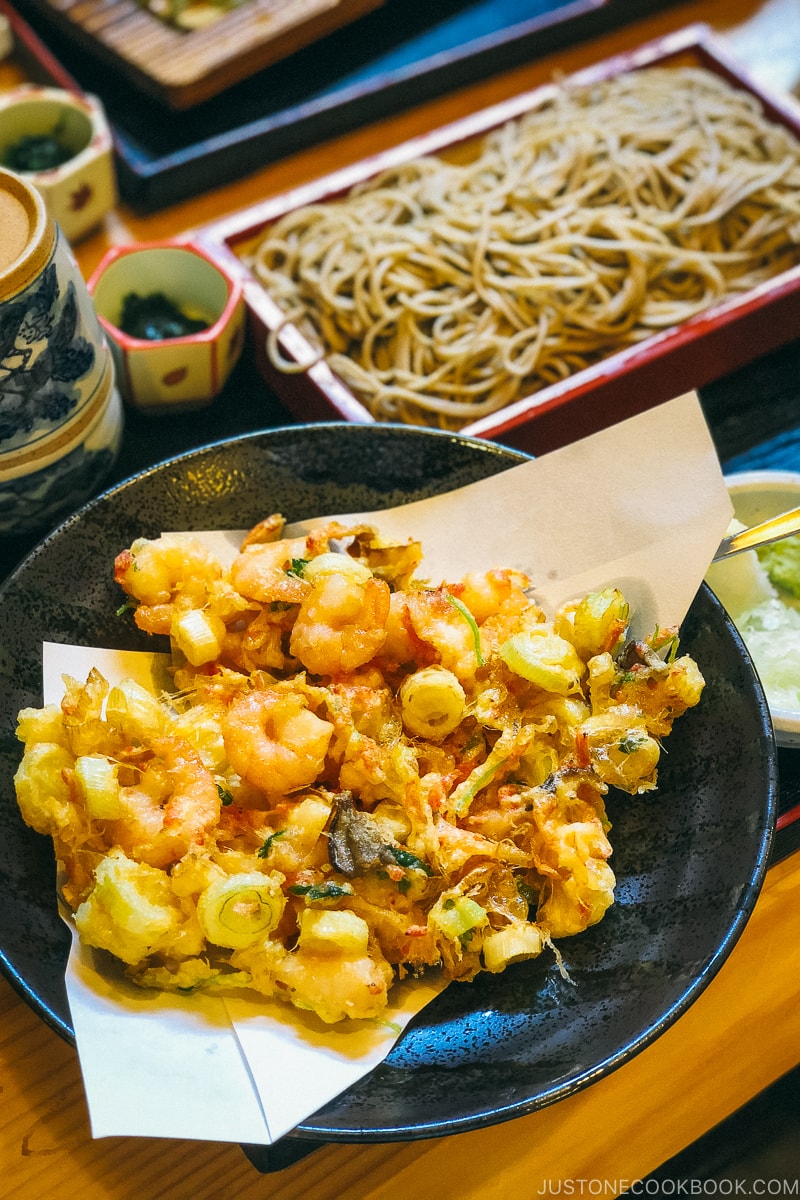
As humble as it can be, the sweet-earthy buckwheat noodle represents the elegant simplicity of the food that is so characteristic of Japan.
The best soba (蕎麦) is usually hand-made in house from scratch and is served either chilled with a dipping sauce or in a hot dashi broth as a noodle soup. When you want something light, healthy yet soul-satisfying, go for a bowl of soba.
JOC recommendations in Tokyo:
- Kawakami An (Azabu Juba, Aoyama)
- Kanda Yabusoba (Kanda)
- Kanda Matsuya (Akihabara)
- Nunotsune Sarashina (Omori)
7. Tonkatsu
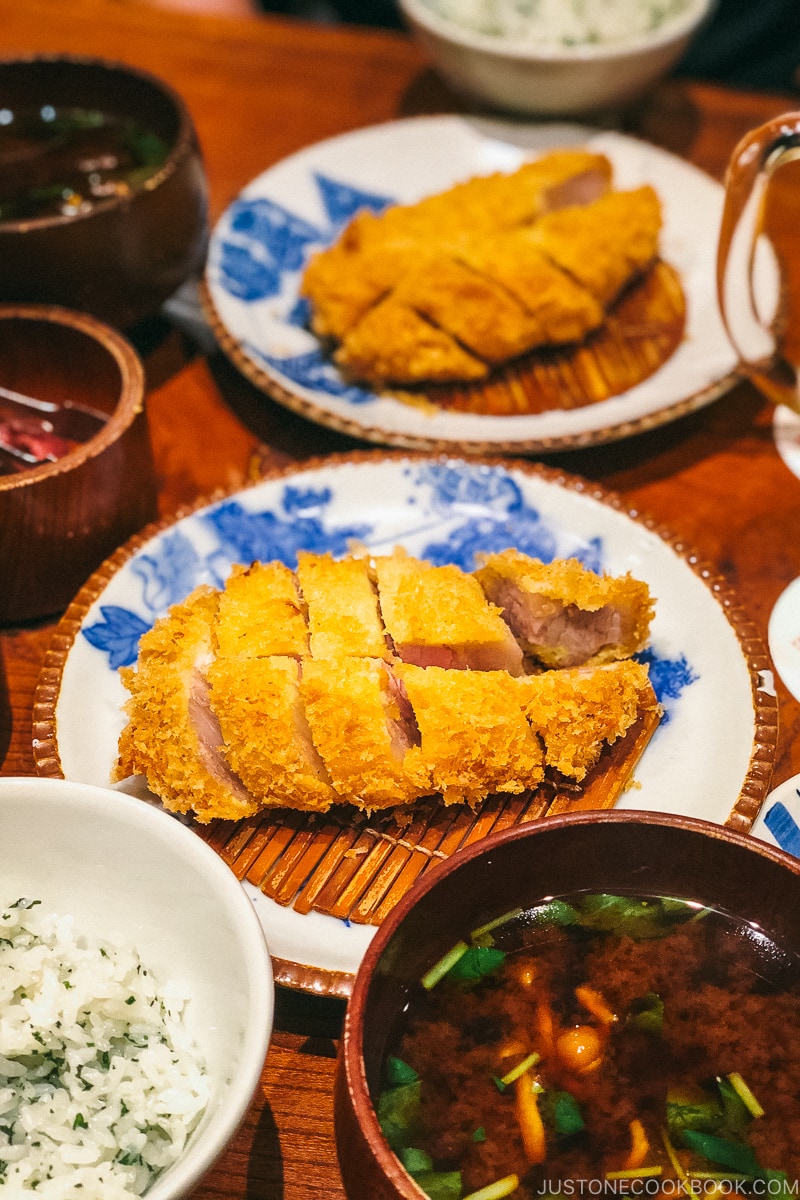
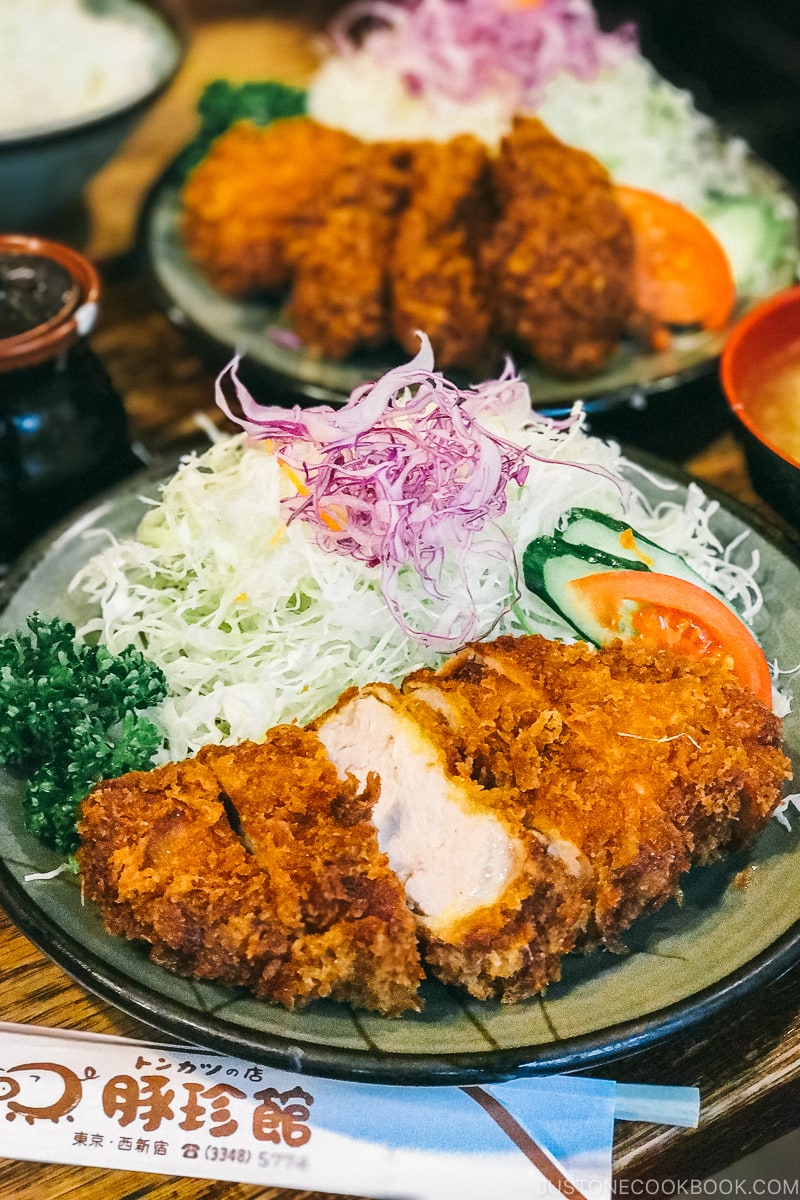
Breaded, deep-fried pork cutlet, Tonkatsu (とんかつ) is the Japanese version of a schnitzel. It has been a working-class dish and a Japanese comfort-food staple for centuries. Much like everything in Japan, tonkatsu can be both casual and very high-end, but the very best tonkatsu is mind-blowingly crispy on the outside, juicy on the inside, and almost grease-free. It’s typically served with a sweet-savory sauce, fluffy steamed rice, a cool pile of shredded cabbage, pickles, and miso soup.
JOC recommendations in Tokyo:
- Tonki (Meguro)
- Butagumi (Azabu)
- Tonkatsu Maisen (Aoyama, Shibuya, etc)
8. Gyukatsu (Beef Katsu)
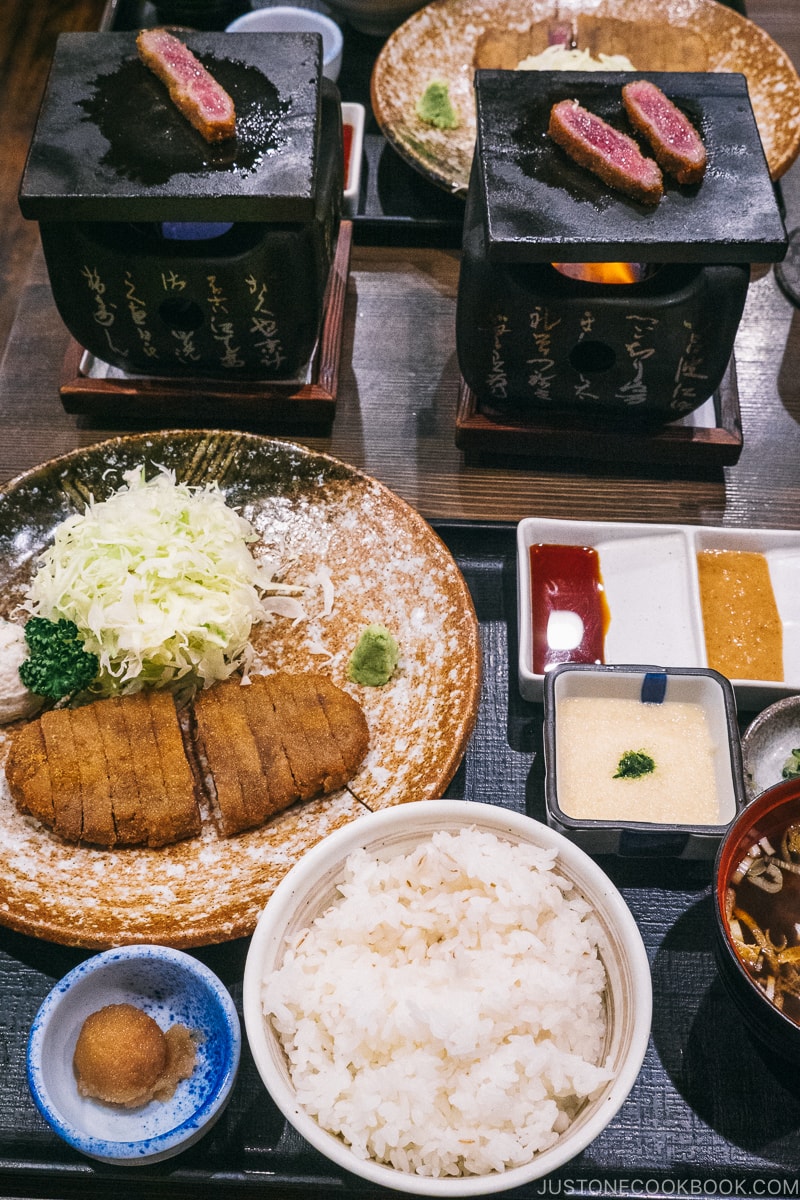
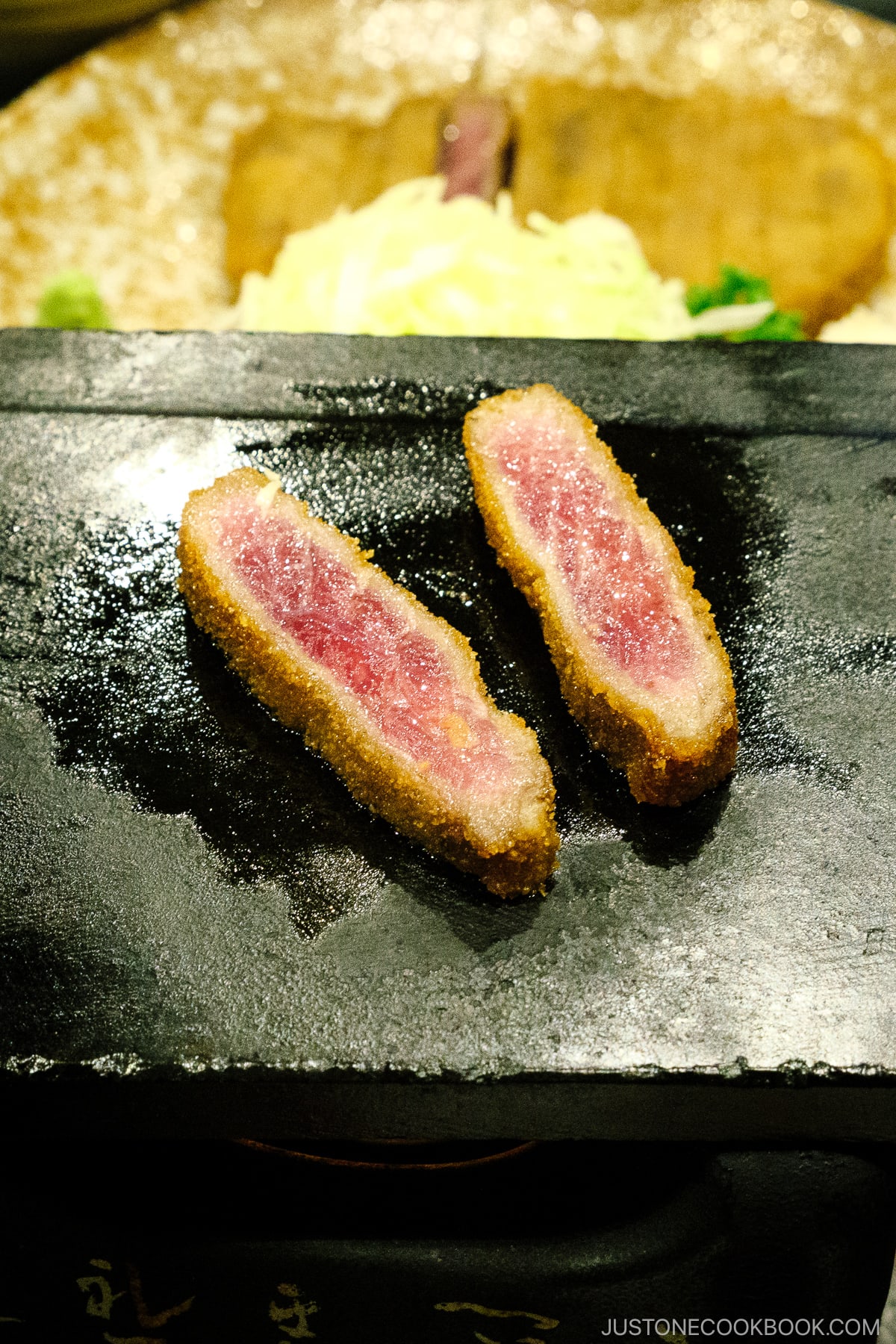
Meet the trendiest star in Japanese food culture: Gyukatsu (牛カツ) or beef katsu. You guess it right, gyukatsu is the beef equivalent of tonkatsu. Breaded and deep-fried beef cutlets have been gaining popularity since 2015. With a crispy exterior and rare to medium-rare interior, gyukatsu is served similarly to tonkatsu, with dipping sauces, rice, cabbage, pickles, and miso soup. You get to grill the meat to your preference on the small burner at your table.
Juicy, melt-in-your-tender, and with the perfect amount of crunch, the dish is the dream of any meat lover. Does it live up to the hype? Well, all of our friends who have tasted gyukatsu attested that it could easily be one of their most unforgettable dishes! You have to give it a try yourself.
JOC recommendations in Tokyo:
- Gyukatsu-MOTOMURA (Shibuya, Shinjuku, Hamamtsucho, etc)
- Gyukatsu Aona (Shinjuku, Ueno, etc)
- Gyukatsu Iroha (Ikebukuro)
9. Sukiyaki
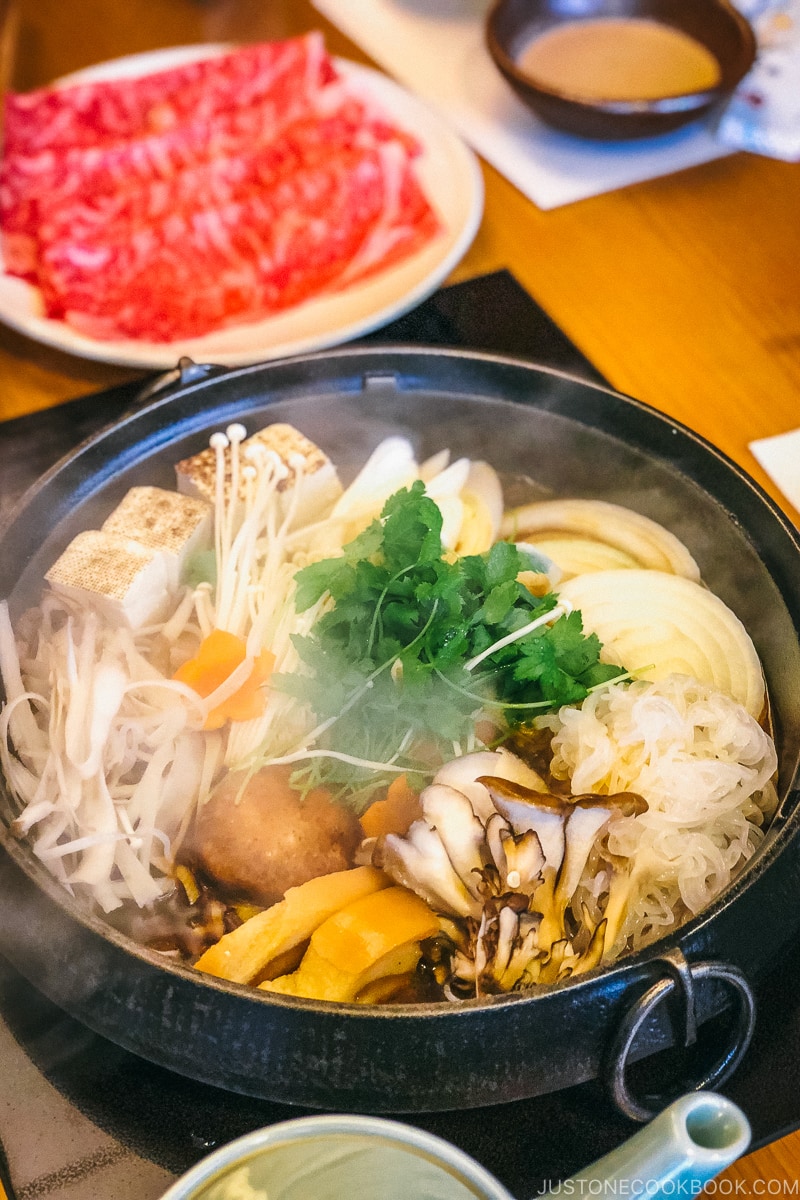
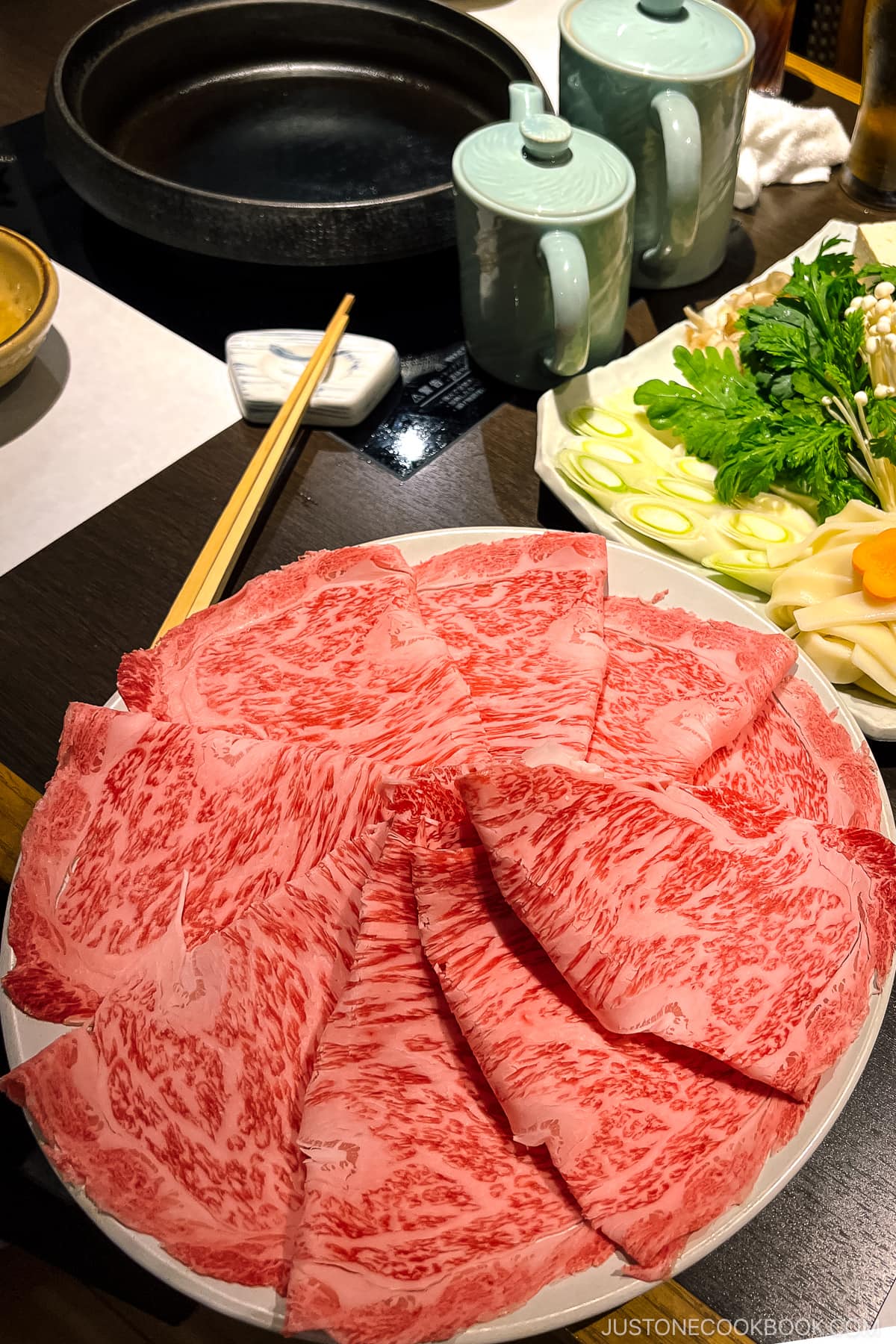
Sukiyaki (すき焼き) is one of Japanese favorites’ cold-weather food, where an assortment of fresh veggies and thinly sliced meat cooked in a sweet and salty soy sauce-based broth in a simmering hot pot. If you visit Tokyo in the fall or winter, mark this hot pot dish on your must-eat list.
JOC recommendations in Tokyo:
10. Udon
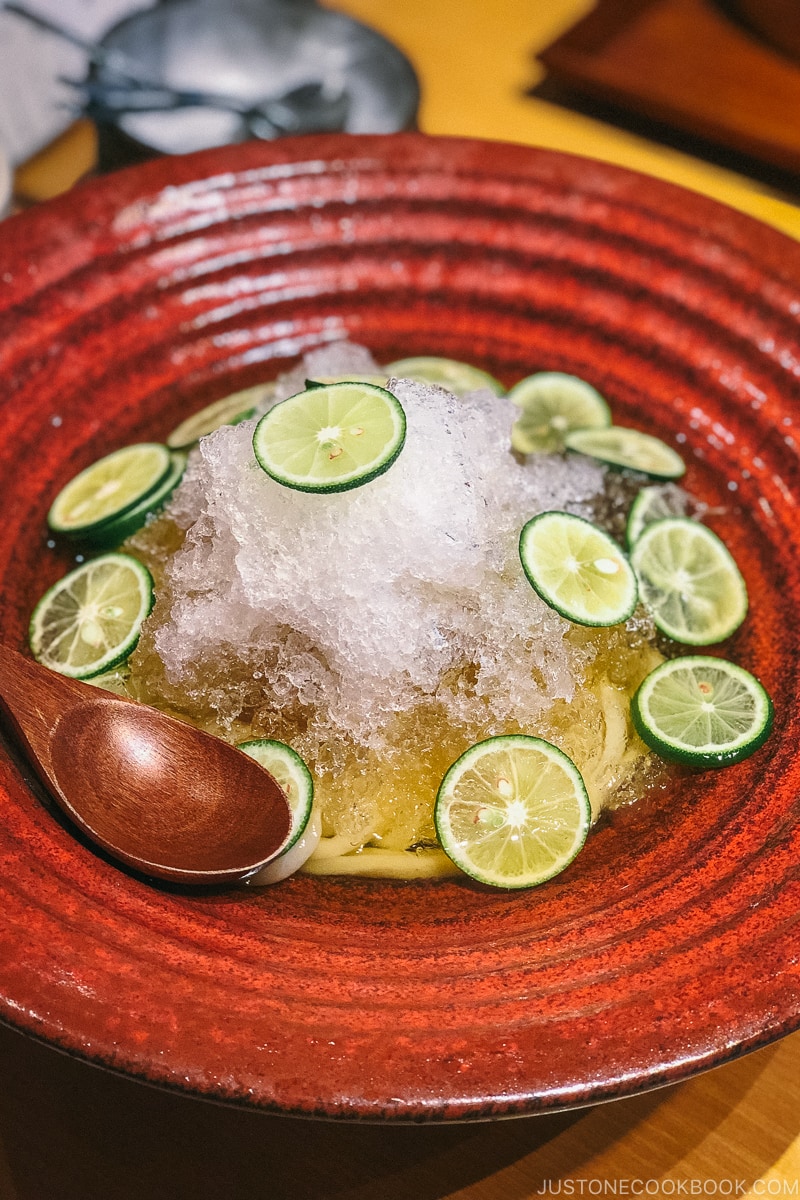
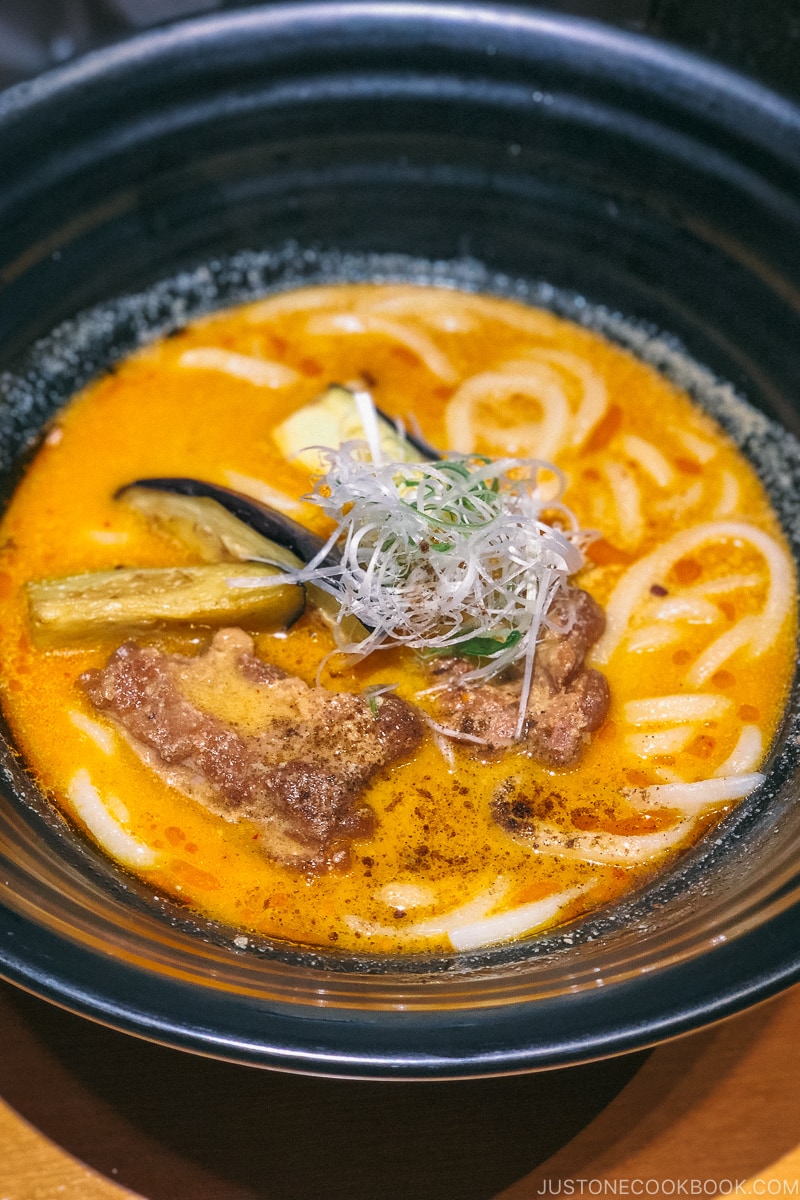
Another Japanese noodle that deserves your attention is udon (うどん). Chewy, slippery, smooth, and supple, udon is the kind of noodle that can melt all your troubles away. You can get udon in hot dashi soup broth topped with flash-fried tempura, cold in the umami mentsuyu sauce, or a creative fusion dish like udon carbonara. We also recommend beef udon, kitsune udon, and yaki udon.
JOC recommendations in Tokyo:
- Oniyanma (Gotanda, Nakameguro, Shimbashi, etc)
- Tsurutontan (Roppongi, Shinjuku, Ginza, etc)
- Udon Yamacho (Ebisu)
11. Yakiniku
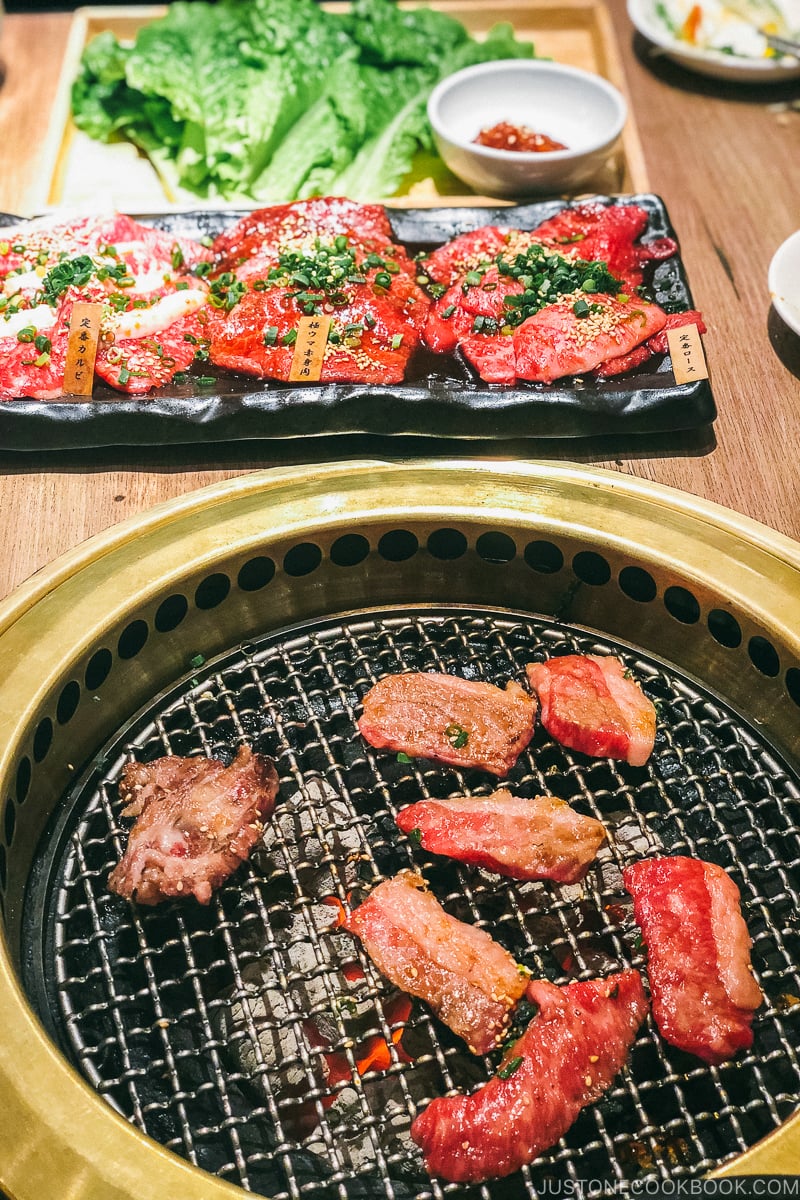
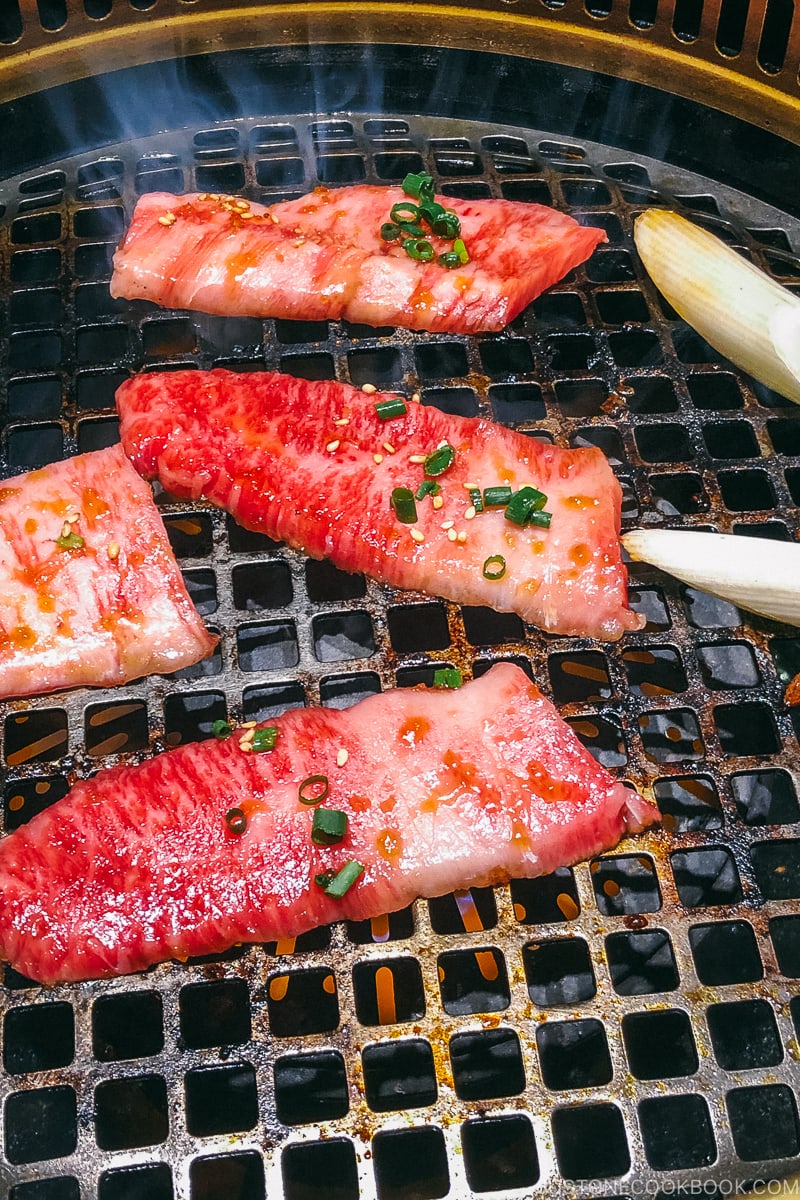
Yakiniku (焼肉) is a Japanese-style BBQ, where a fine selection of tender meat, vegetables, and the savory dipping sauce is laid out in front of the table. Everyone sits around the grill and cooks and eats the food. It’s the most delicious and jovial way of experiencing Japanese communal meals.
JOC recommendations in Tokyo:
- Yakiniku Champion (Ebisu, Nakameguro, Ikebukuro, etc)
- Yakiniku Ushigoro (Ginza, Nishi Azabu, Omotesando)
- Yakiniku Jumbo (Shirokane, Hongo)
12. Shabu Shabu
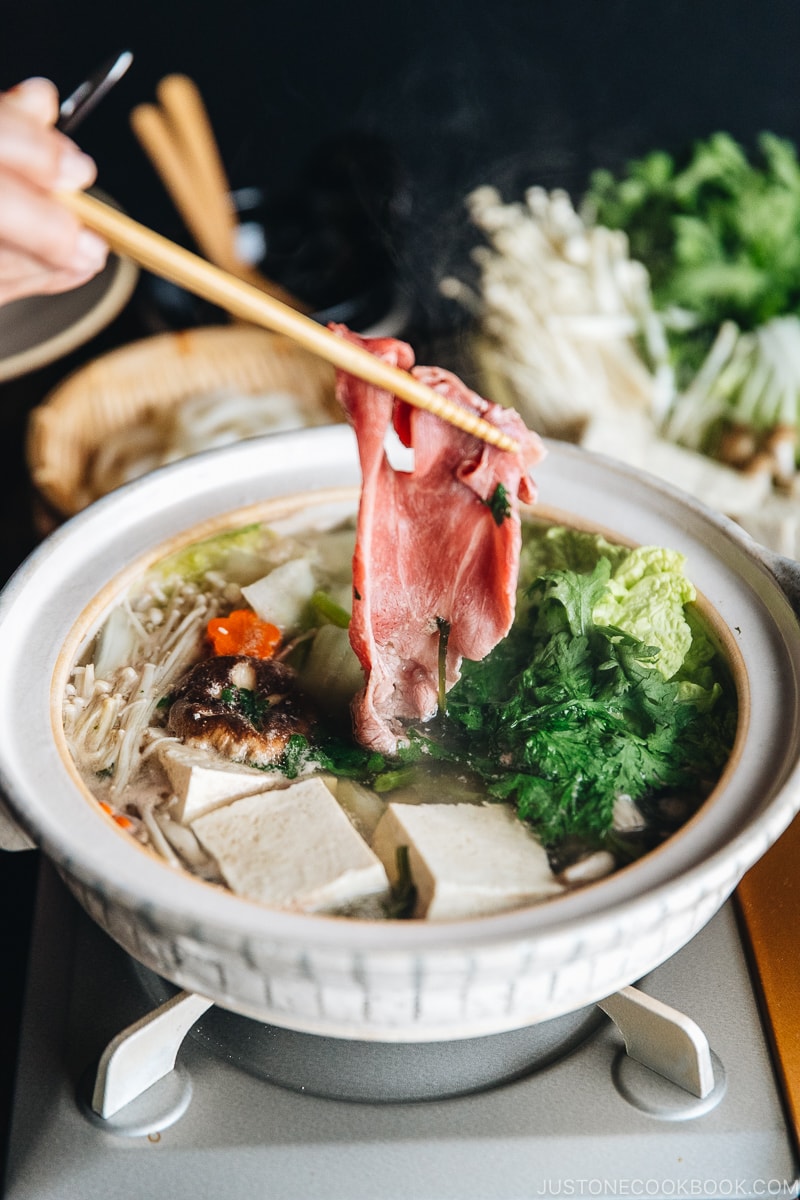
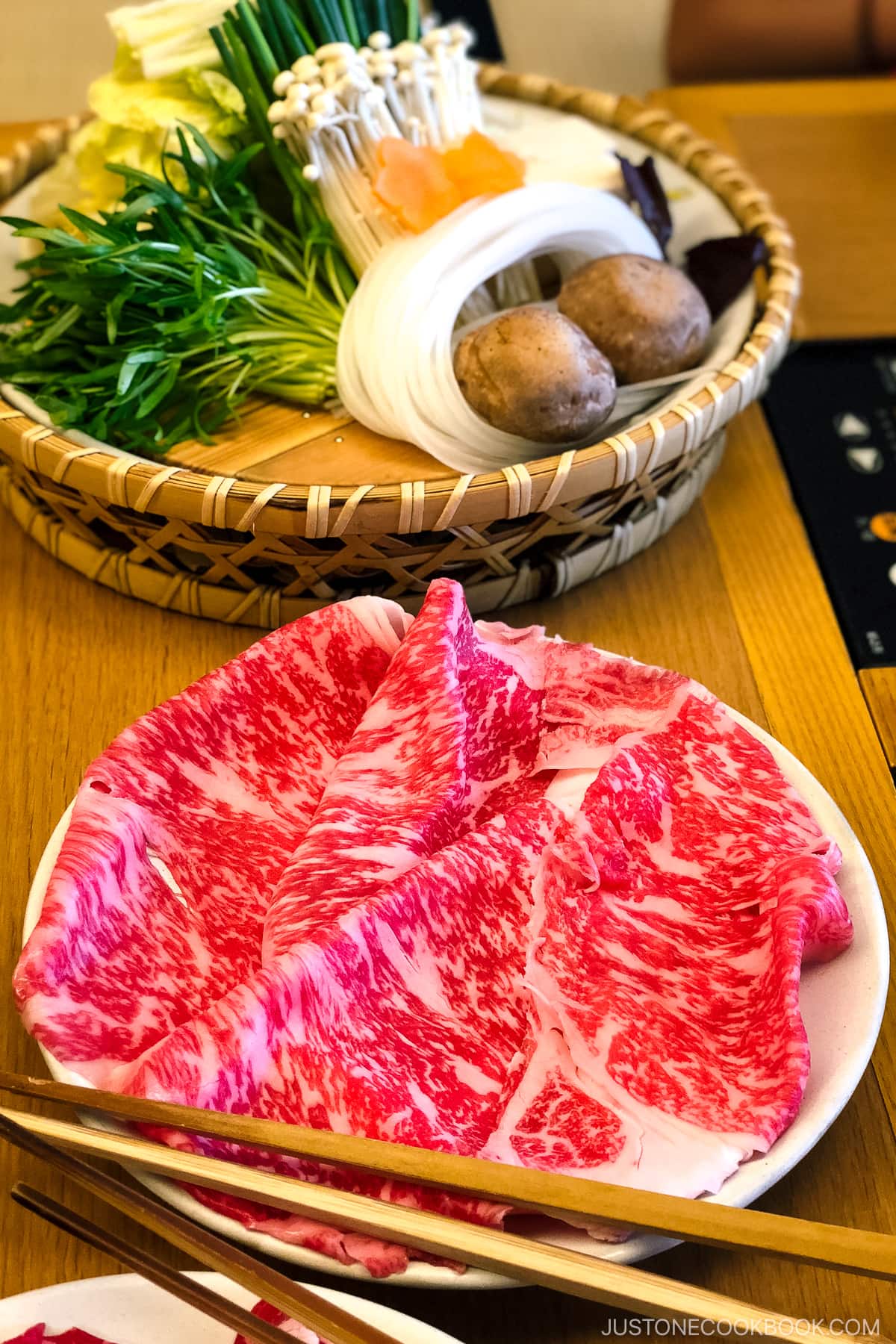
When the weather cools, the Tokyolites keep themselves warm and cozy by partaking in hot pot dishes like shabu-shabu (しゃぶしゃぶ). The name “shabu shabu” came from the sound when you stir the vegetables and meat with your chopsticks and ‘swish swish’ in the hot pot. As everyone sits around the hot pot at the table, cooks together, and eats while you chat, it’s a meal that makes delicious memories.
JOC recommendations in Tokyo:
13. Monjayaki
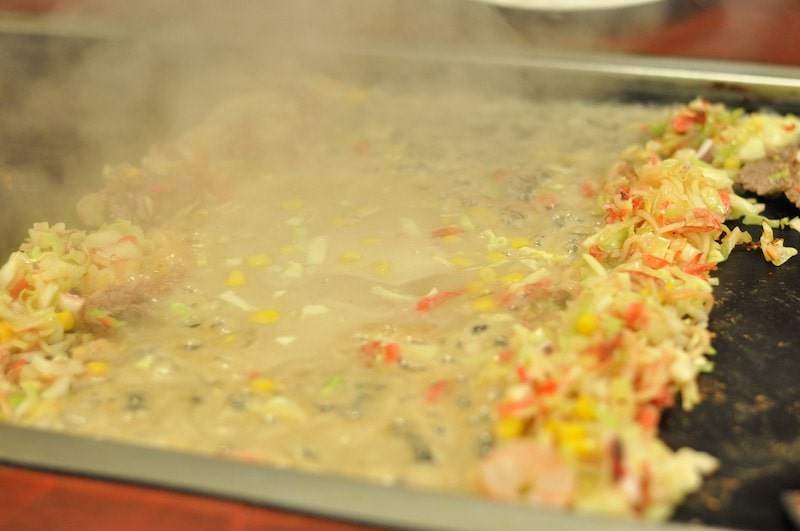
You may heard of okonomiyaki, but it’s more famous in the Kansai region, like Osaka. Monjayaki (もんじゃ焼き), often called Monja, is pretty much the sibling of okonomiyaki and that’s what you’d need to try in Tokyo. Both monjayaki and okonomiyaki are very similar, where ingredients are finely chopped and mixed into the flour batter before frying on the hot grill. The main difference is that monja includes additional dashi in the batter, resulting in a runnier texture.
JOC recommendations in Tokyo:
There are too many, but you can find some best monjayaki restaurants in the Tsukishima district of Tokyo, where the dish is said to have originated. We recommend walking around Tsukishima Monja Street for all things monja!
- Monja Kura (Tsukishima)
- Sozai & Monja Sato (Yoyogi)
Even though okonomiyaki is popular in Kansai area, there are several great places in Tokyo as well. If you are craving okonomiyaki, sante-kan is pretty good!
14. Teppanyaki
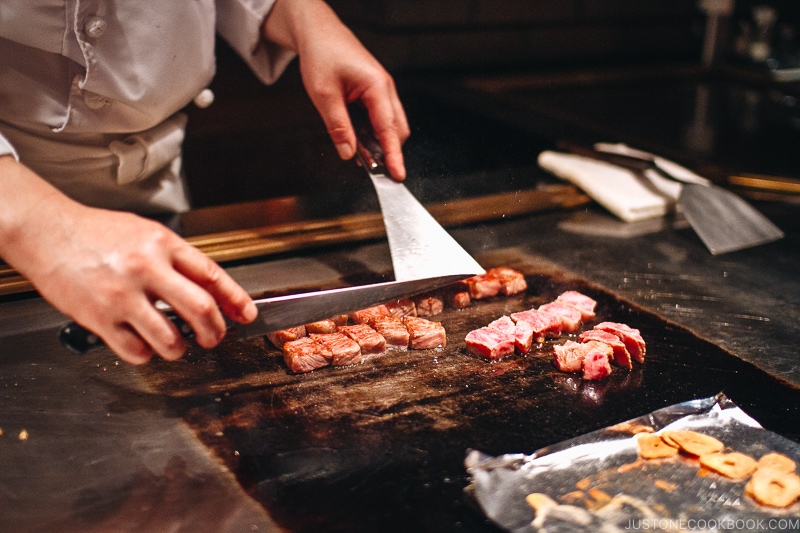
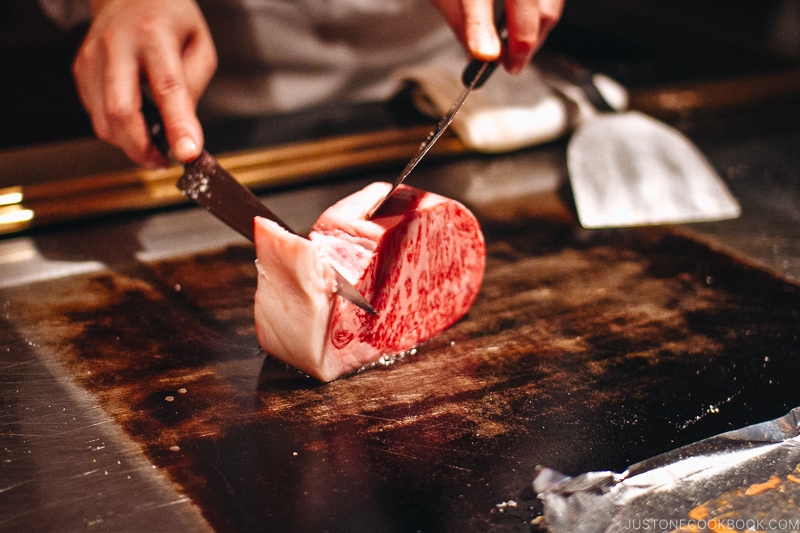
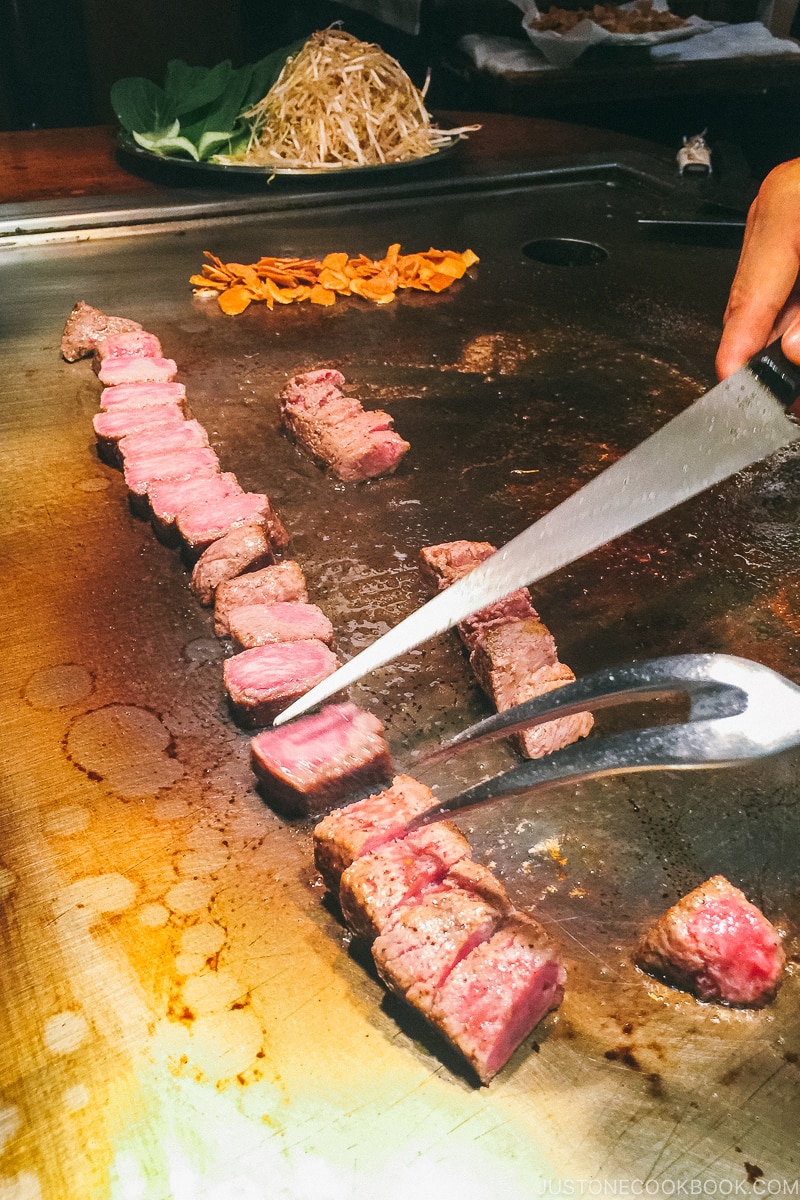
It is true that you can easily find teppanyaki (鉄板焼き) restaurants outside of Japan, but only in Japan, you get to sample the finest marbled wagyu beef and the freshest catch from the ocean. A feast for the five senses, teppanyaki fuses the concept of cooking Western-influenced food on a teppan (iron griddle).
As a diner, you sit around a large, open grill and watch the skilled chef performs culinary tricks akin to dinner theater as they cook the meat, seafood, and vegetables with impressive flair. While teppanyaki restaurants outside of Japan can be casual and affordable, teppanyaki dining in the Kanto regions (including Tokyo) is usually upscale (on the other hand, it’s more casual in Kansai regions). You have to save up for the unmatched teppanyaki experience, but it’s worth it!
JOC recommendations in Tokyo:
- Ginza Ukai Tei (Ginza)
- Okahan Honten (Ginza)
- Atelier Morimoto XEX (Roppongi)
15. Japanese Sandwiches
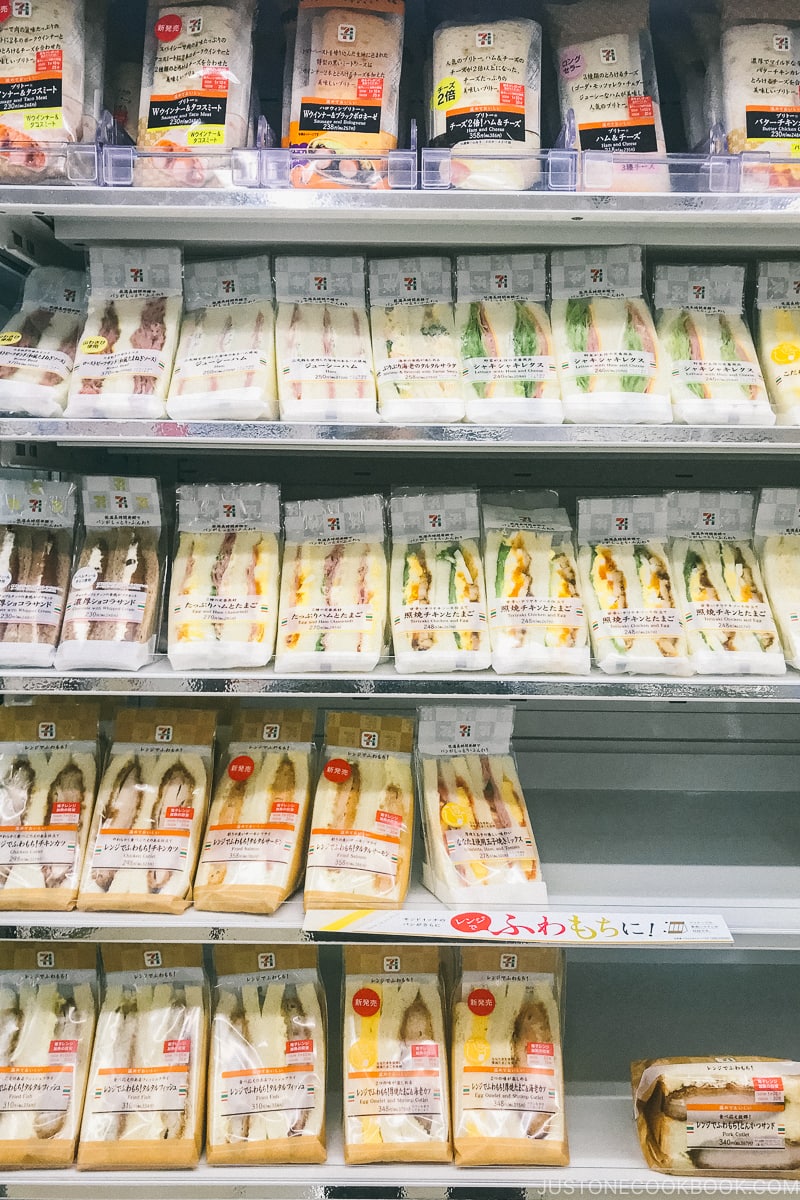
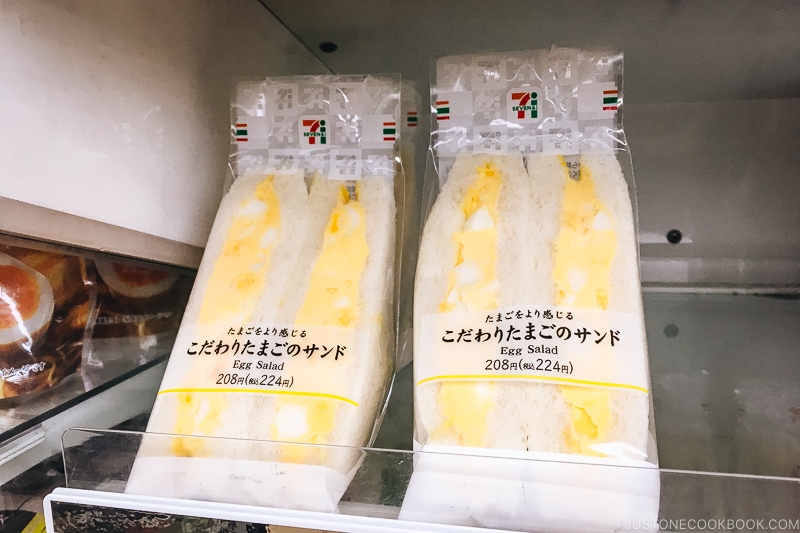
While rice and noodles are the longtime staples, Japanese sandwiches (サンドイッチ) have been making their limelight in the culinary scene even outside of Japan. even outside of Japan. They are more than just grab-and-go food, but a serious craft that showcases the boundless creativity and Japanese precision.
Some of the must-try sandwiches: tamago egg sando (egg salad sandwich), katsu sando (pork cutlet sandwich), and fruit sando (fruit sandwich).
JOC recommendations in Tokyo:
- Convenience stores
- Bakeries
- Gourmet food falls on B1 floor of the department stores
16. Japanese Pastries
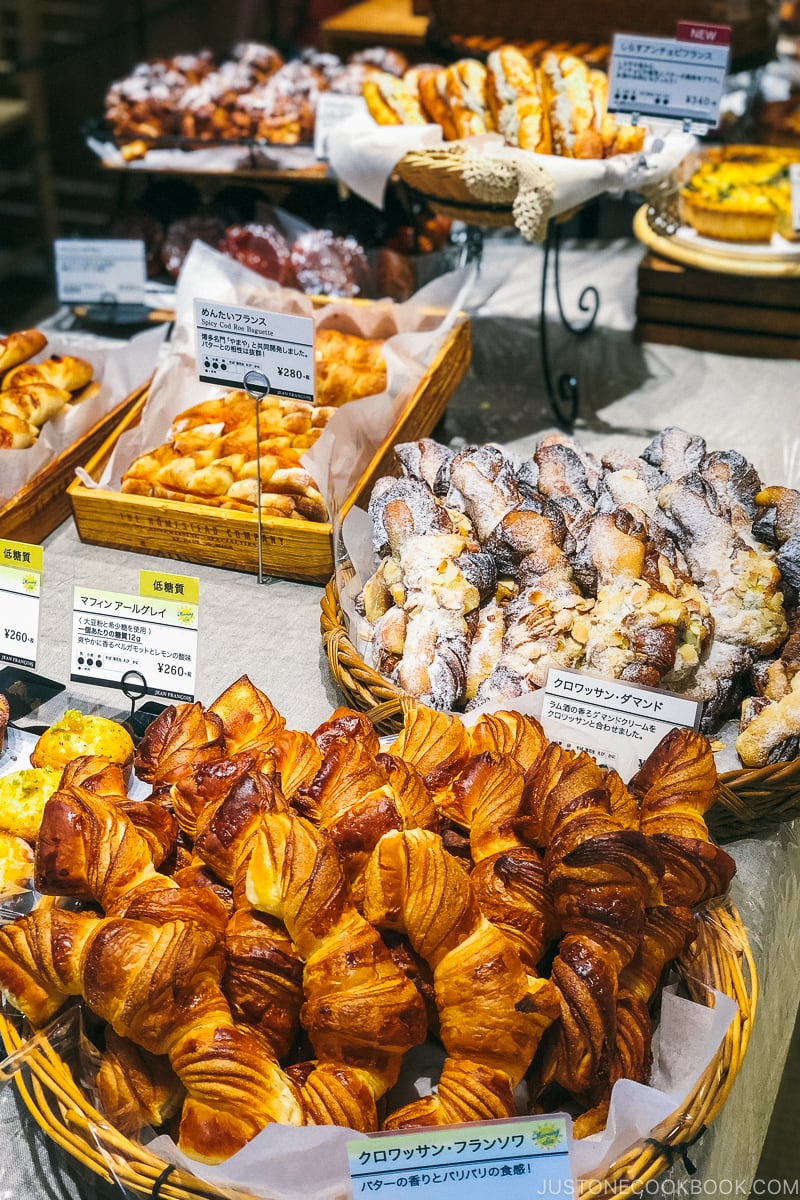
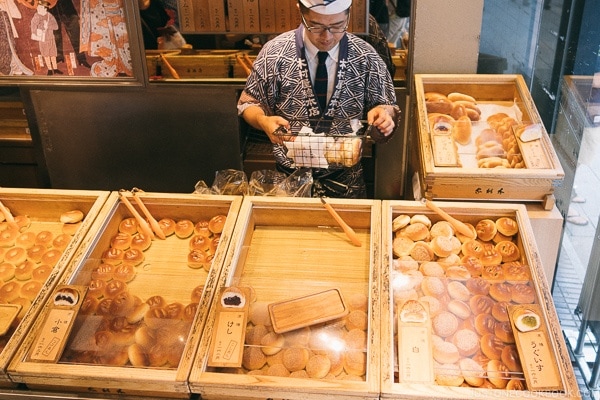
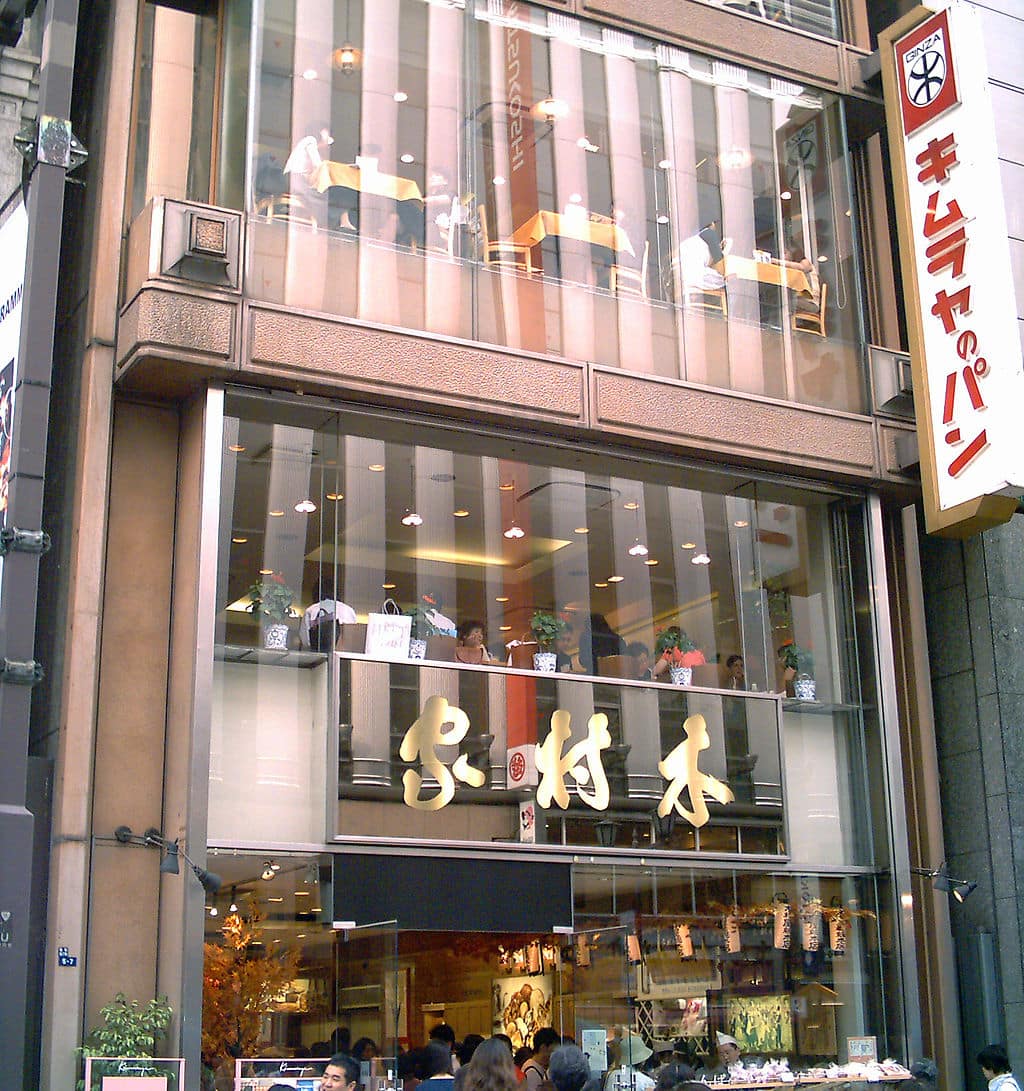
The French may get all the glory when it comes to pastry-making, but those who have been to Tokyo would agree that Japanese pastries (ケーキ・お菓子) are equally on par, if not even better when it comes to the selection. We think that’s because the Japanese are at the advantage of incorporating influences from different cultures and unique, seasonal ingredients that make the offerings remarkably attractive.
For sweet pastries, go for Japanese flavors such as matcha green tea, cherry blossom, chestnuts, black sesame, yuzu, red bean, or Japanese sweet potato. For the savory department, you’ll find fresh hot buns like curry pan (crispy fried bread with curry filling), melon pan (sweet bread with crispy biscuit crust), yakisoba pan (savory noodles in stuffed in hot dog bun), and anpan (sweet red bean bun) on the horizon.
JOC recommendations in Tokyo:
- Viron Brasserie (Marunouchi)
- Criollo (Itabashi)
- Bread, Espresso & (Shibuya)
- Kimuraya Bakery (Ginza)
17. Unagi
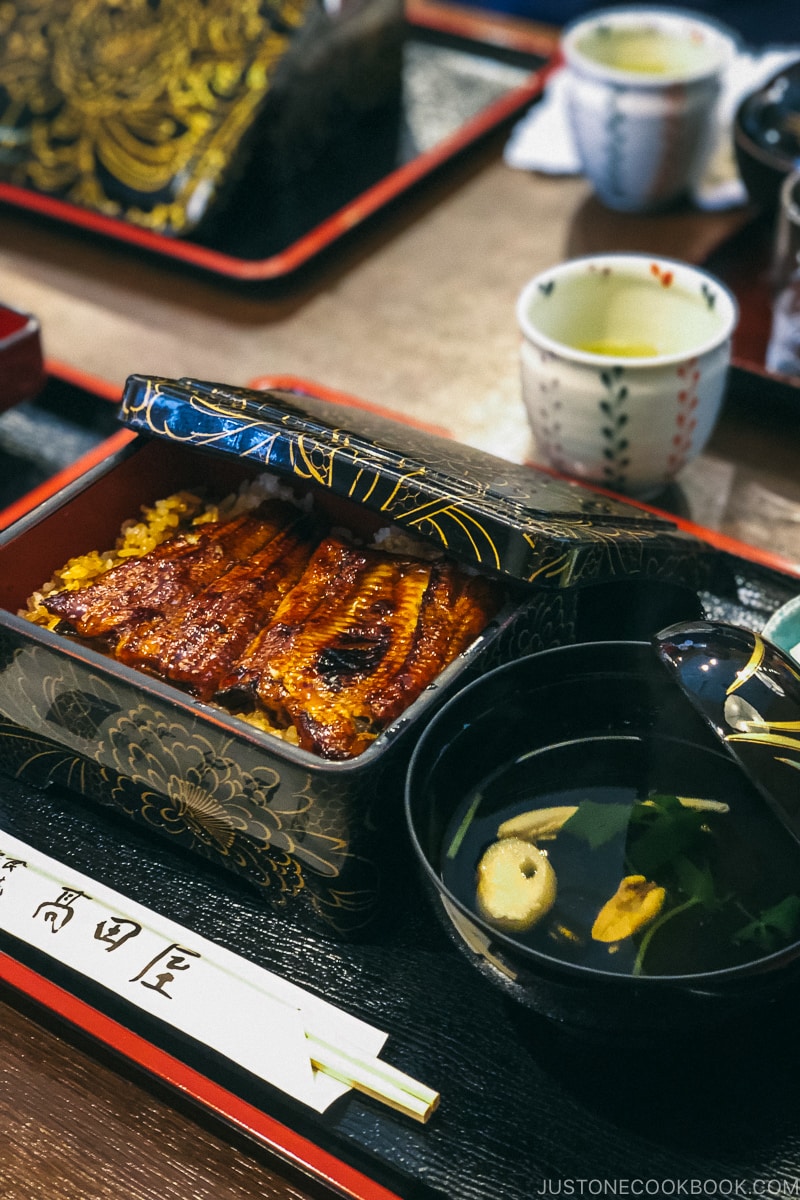
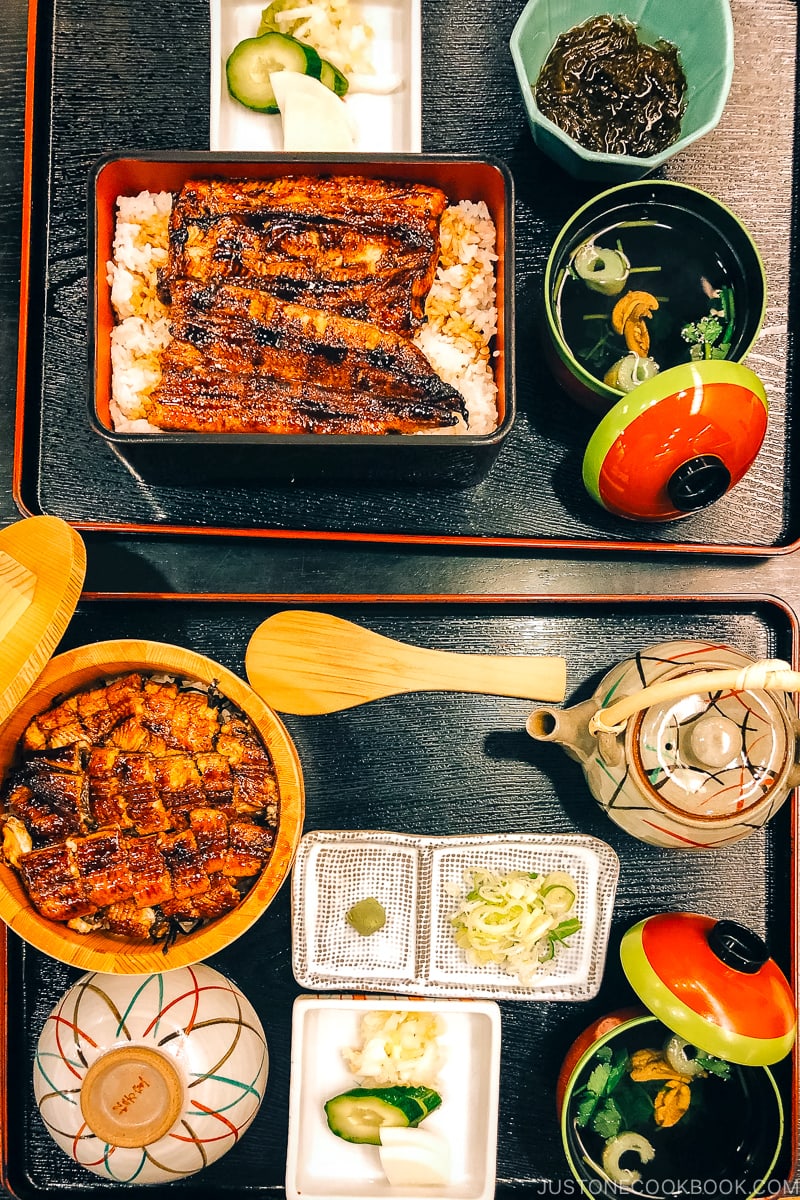
One of the summer traditions in Japan is to eat unagi (鰻) or freshwater eel to keep cool during the hot season. There is even a custom of eating Unagi on the Day of the Ox in the midsummer as it is believed to provide stamina and energy in the hot days.
Some popular unagi dishes include unadon (grilled sliced eel served over a bed of rice), unagi nigiri (rice ball topped with a small slice of grilled eel), shirayaki (roasted eel and seasoned only with salt), eel hone senbei (deep fried eel bones enjoyed as snack with alcoholic drinks) and kimosui (a clear soup flavored with boiled eel livers).
You can enjoy unagi sushi at most sushi restaurants or head over to specialty restaurants devoted to serving only unagi dishes.
JOC recommendations in Tokyo:
- Aikawa (Takadanobaba)
- Ishibashi (Edogawabashi)
- Hatsuogawa (Asakusa)
18. Yoshoku
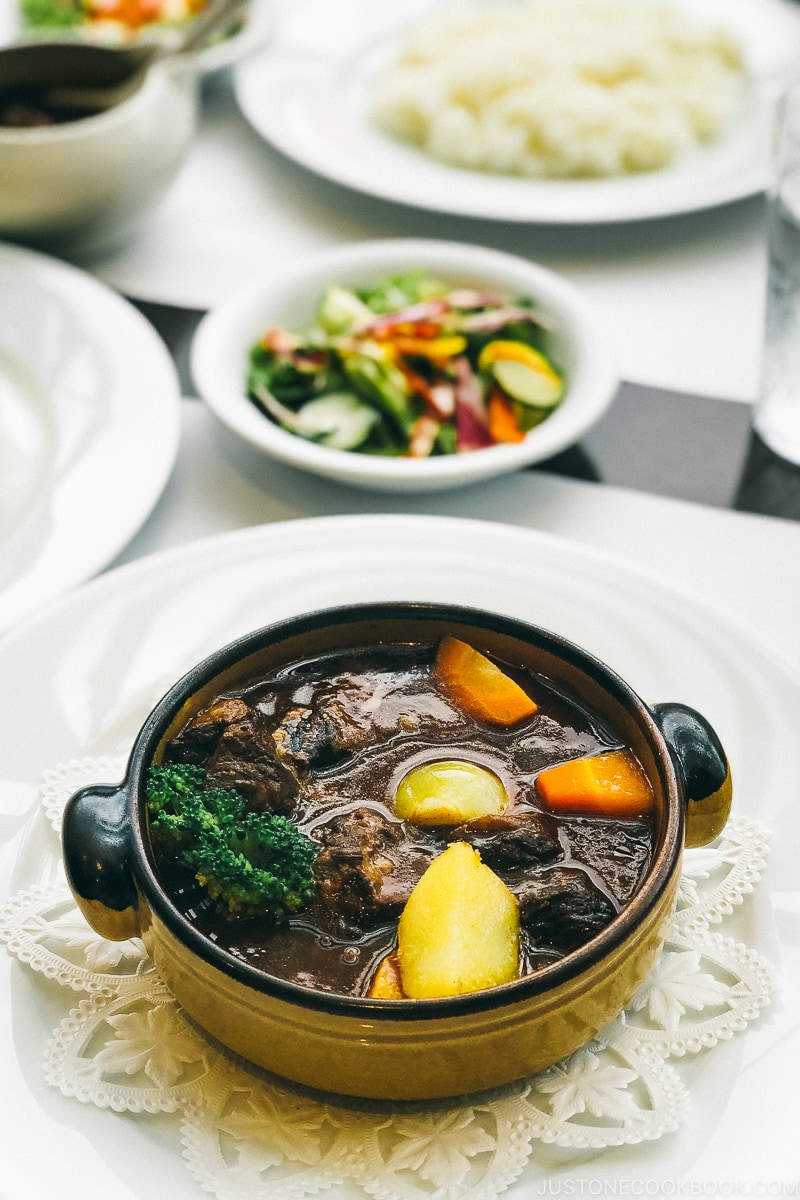
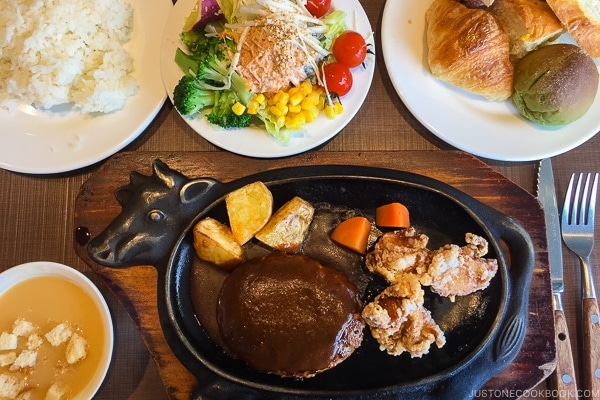
Put simply, Yoshoku (洋食) is Japanese-style Western food that is as central as traditional Japanese food. It is not merely a fusion of French or Italian cuisine, but an innovation that proves to be distinctly Japanese. Mainstream yoshoku dishes include omurice (omelet rice), Hayashi rice, beef stew, hambagu (hamburger patties), and wafu pasta – each one goes through thoughtful Japanese twists through the ingredients and preparation. Tonkatsu and Japanese curry, listed above, also belong to the yoshoku category.
You can find yoshoku dishes being served at Famiresu (casual chain diners), cafes, Kissaten 喫茶店 (old-school Japanese coffee houses), hotel restaurants, and even at convenience stores. Many restaurant establishments still proudly serve their signature dishes that have been loved by artists, celebrities, and politicians for decades.
Visiting Tokyo with kids or picky eaters? Don’t even think about McDonald’s when you have so many yoshoku dishes to choose from!
JOC recommendations in Tokyo:
- Taimeiken (Nihonbashi)
- Shinsekai Grill Bon (Ginza)
- Shiseido Parlour (Ginza)
19. Wagashi (Japanese Sweets)

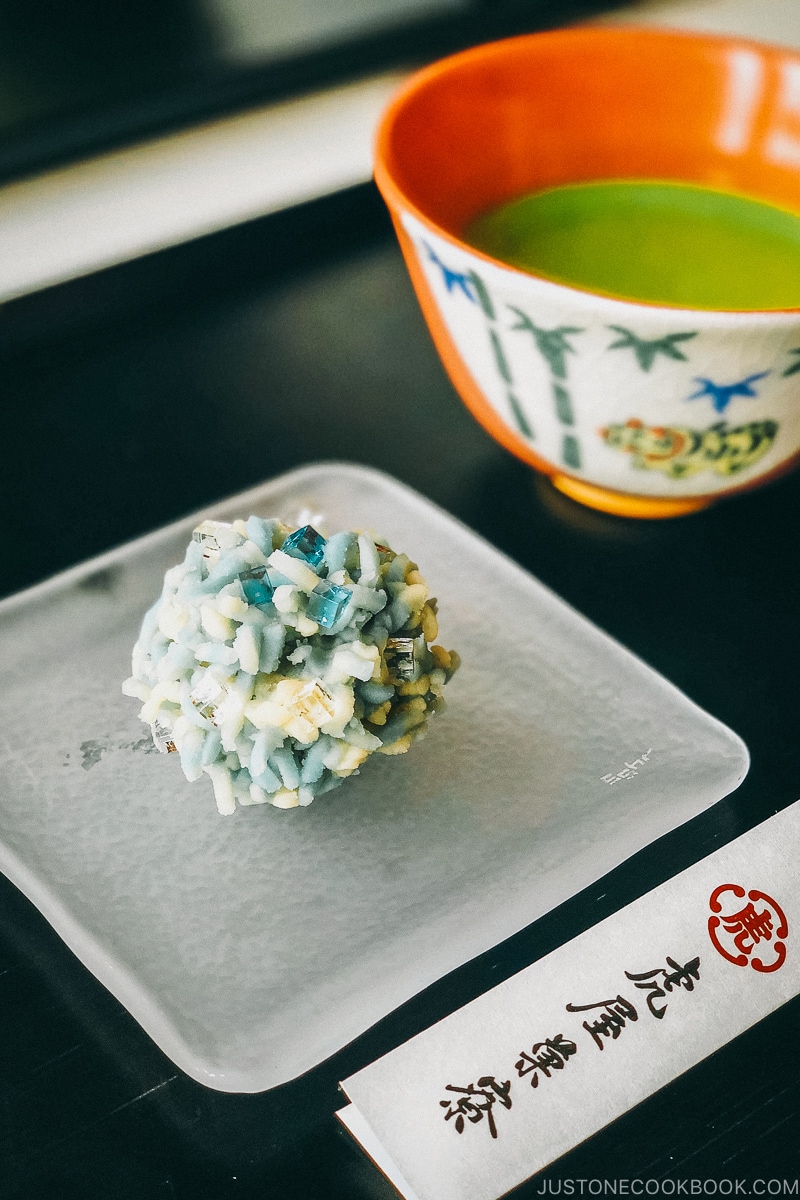
Japanese sweets, known as wagashi (和菓子), are delightful tea treats that carry a rich history entwined with Japanese culture. They come in all sorts of shapes and sizes, but here are some of the must-try wagashi: dorayaki (mini pancake sandwich with a sweet red-bean filling), dango (skewered dumpling balls made with rice flour), manju (steamed buns with red bean paste), senbei (savory rice crackers) and mochi.
If you’re visiting in the summer, treat yourself with kakigori (shaved ice with syrups and toppings) and anmitsu (agar-agar jelly with sweet toppings).
JOC recommendations in Tokyo:
- Toraya (Asakusa)
- Minamoto Kitchoan (Ginza)
- Nana’s Green Tea (multiple locations)
You can also find shops serving wagashi at the airport, major tourist areas and big department stores.
20. Fruit Parfait
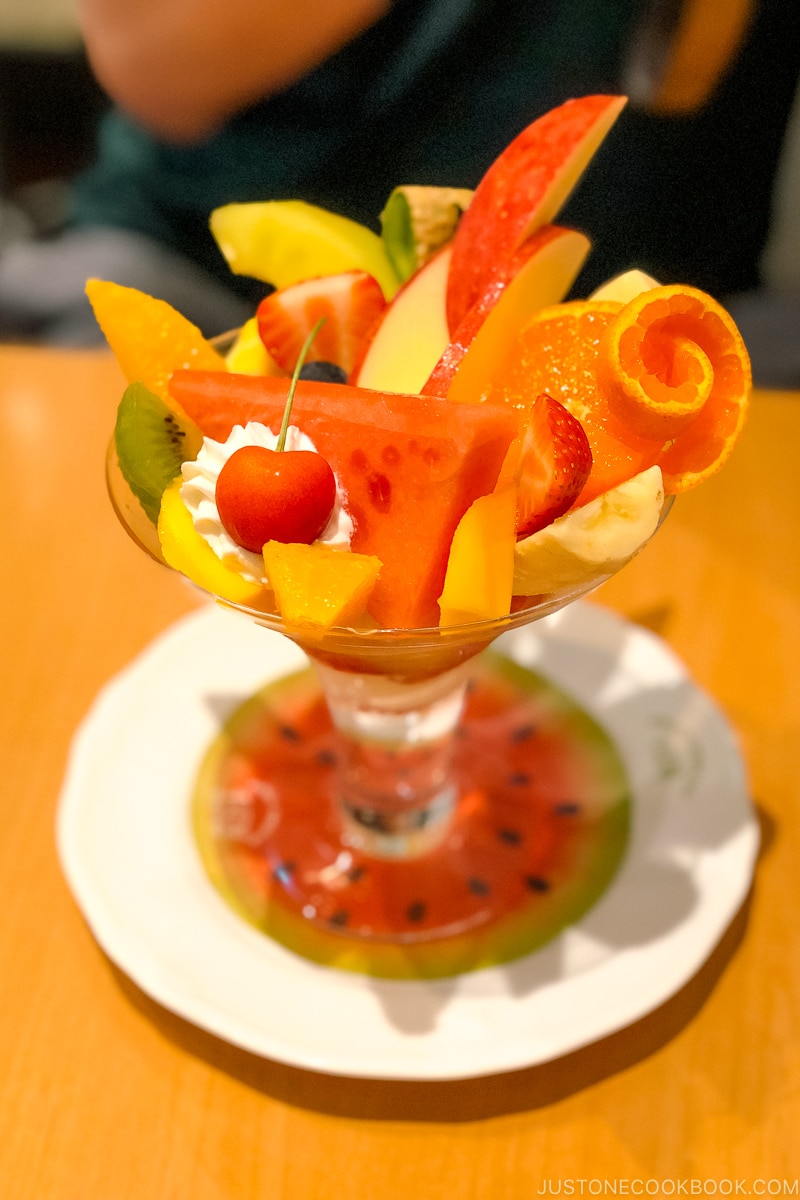
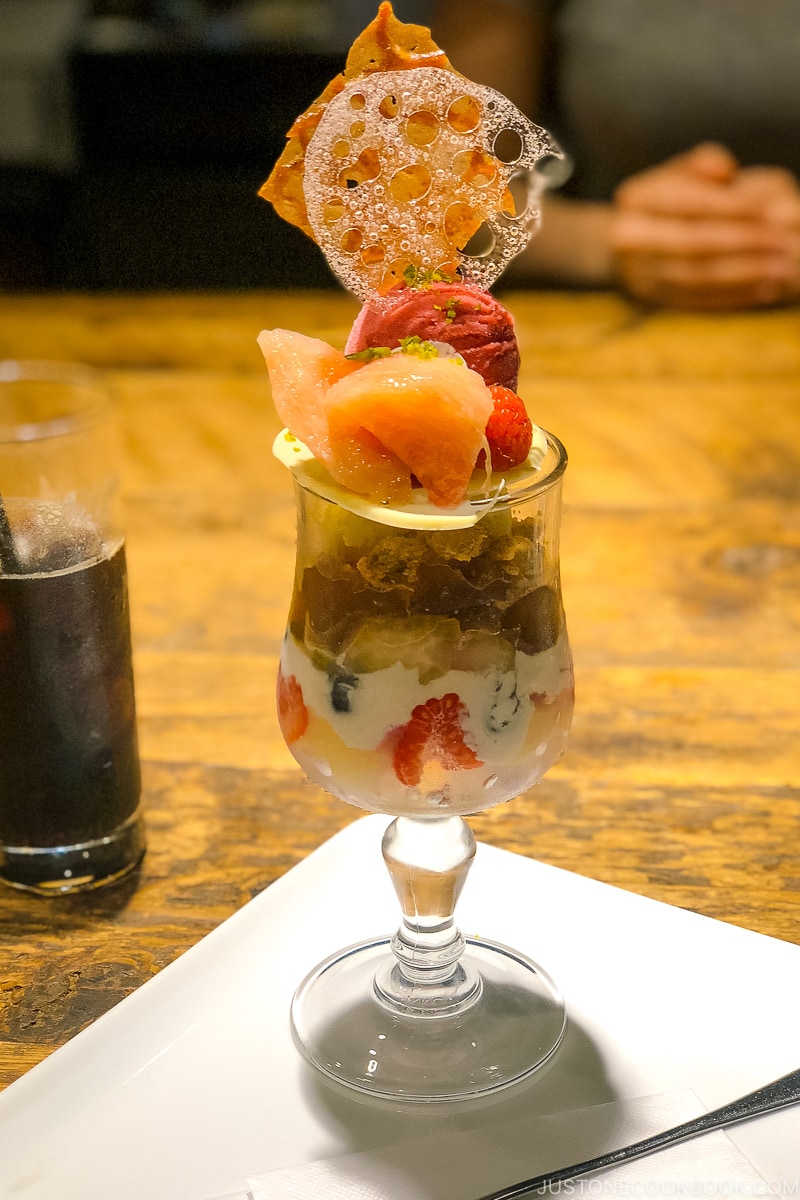
Walking around the busy streets of Tokyo, you will often see tall decorative glasses of plastic fruit parfaits (フルーツパフェ) in the window displays of coffee shops (kissaten 喫茶店) and family restaurants. The colorful layered dessert is a classic sweet treat for the Japanese, and is available year-round. Japanese parfaits are made mainly of ice cream, fruits, and whipped cream along with other sweet toppings.
Strawberry, chocolate, and matcha (green tea) are popular year-round parfait menu items but you might see some seasonal parfaits such as peach and melon.
JOC recommendations in Tokyo:
- Fruits Parlor Goto (Asakusa)
- Sembikiya (Nihonbashi)
- Takano Fruits Parlor (Shinjuku)
Tips on How to Find The Best Foods to Eat in Tokyo
- Use Tabelog Japan Restaurant and Food Guide – this website provides the most comprehensive reviews on restaurants in Japan. You can easily find different categories of foods, a list of restaurants, and ranking scores. We have this article that shows you how to use Tabelog in detail.
- If you are in a hurry and prefer to sample a little bit of everything at an affordable price, head to a depachika, the basement floor of a Japanese department store. You’ll find an astonishing amount of food that is delicious and affordable. Check out the Shinjuku ISETAN food floor guide.
- On a tight bagpacker’s budget? Konbini (Japanese convenience stores) like 7-Eleven and the vending machines are your best friends when you visit Tokyo. You can literally feed yourself some decent ramen, sandwiches or even yakitori there!
- Surprise yourself by hopping onto hole-in-the-wall eateries. If there’s a line in front of you, it is usually a good sign.
Pro Tips for Japanese Food Lovers
For a truly unique Japanese food experience, you may want to try out kaiseki ryori, a traditional Japanese multi-course meal that will leave a lasting impression. It is the equivalent of tasting course-style dining in the U.S. but with an unmistakable emphasis on seasonality, culinary artistry & hospitality. Dubbed Japanese haute cuisine, kaiseki ryori is typically served at ryokans, high-end hotels, and fancy restaurants called ryotei (料亭).
Another food highlight is the traditional Japanese breakfast, which comprises rice, soup, vegetables, and protein such as salted salmon, pickles, and other small side dishes. It is a lighter version of a regular Japanese lunch or dinner complete in presentation and nutrients. If you stay at a hotel or ryokan, go for an elaborate Japanese breakfast instead of a regular Western breakfast.
We hope this Food Guide gives you a good sense of the best foods you can eat when visiting Tokyo. For those who have visited Tokyo, what are some of your most memorable foods and best eats? We’d love to hear from you!


